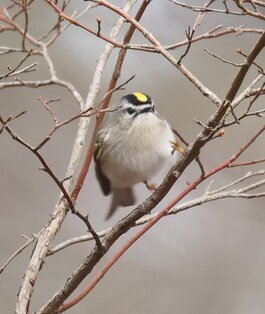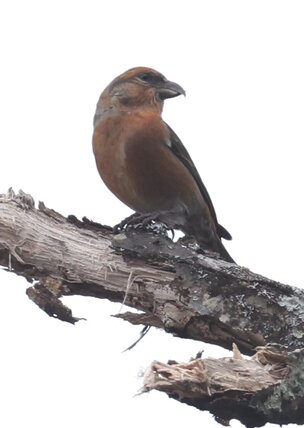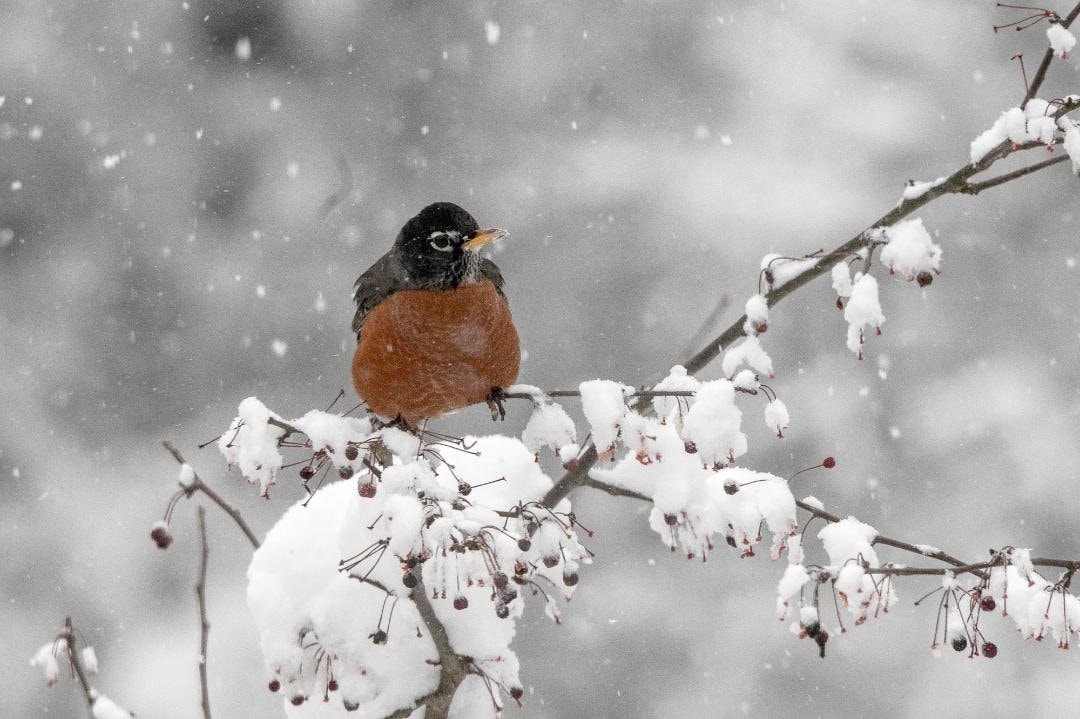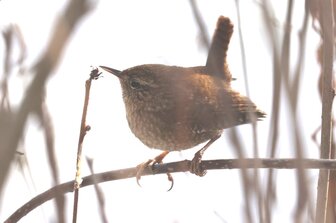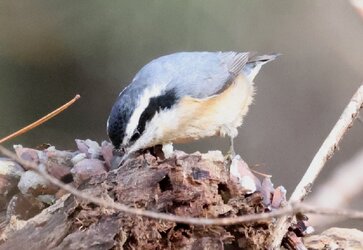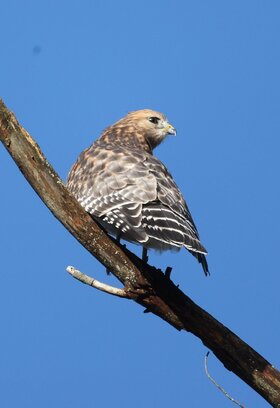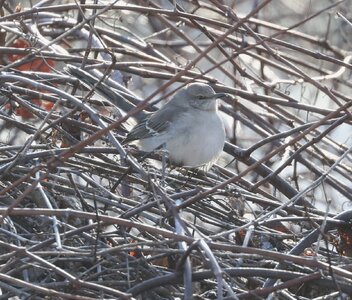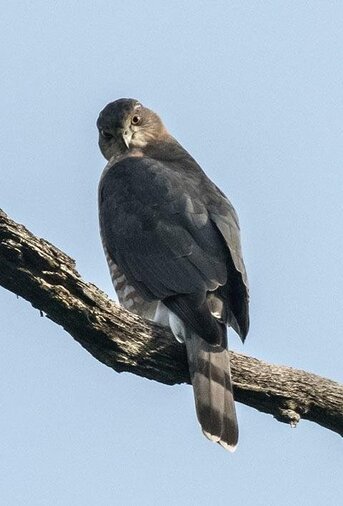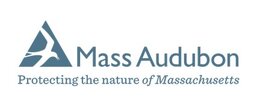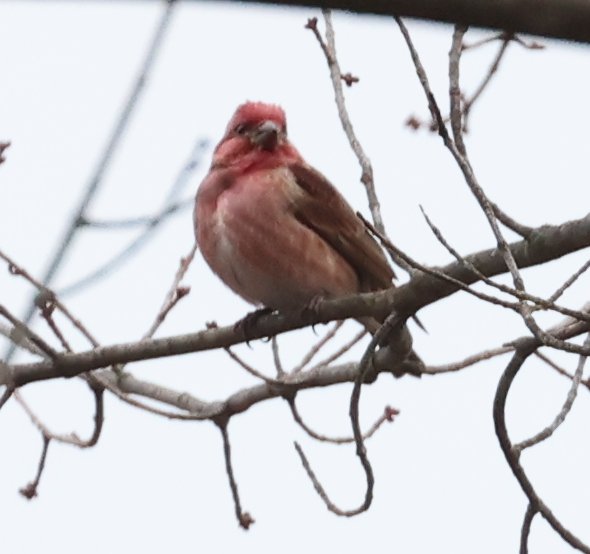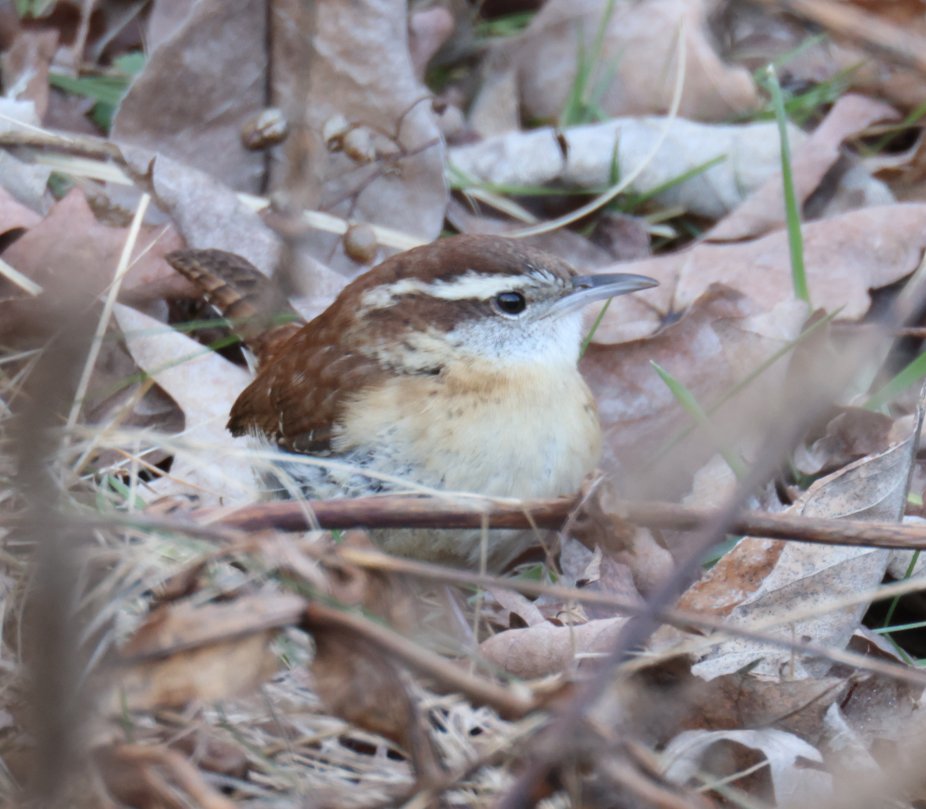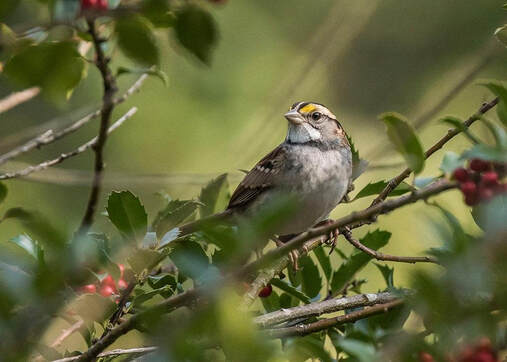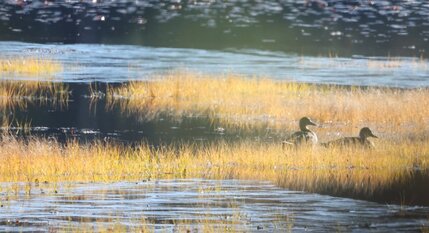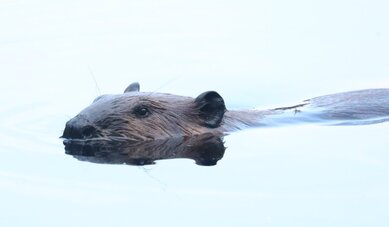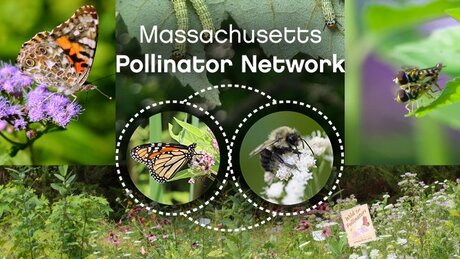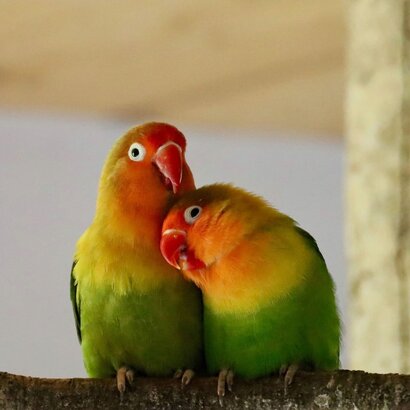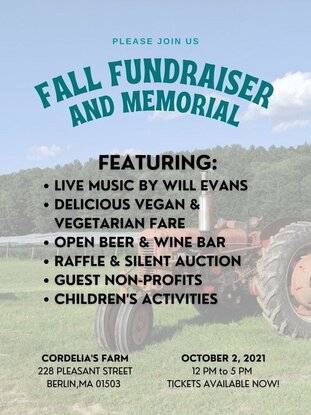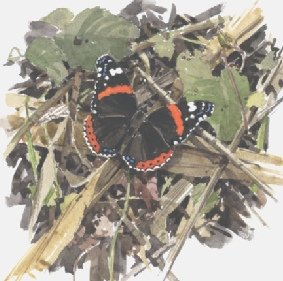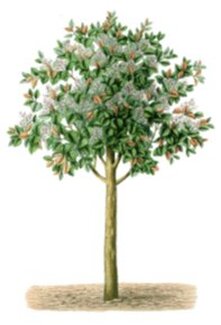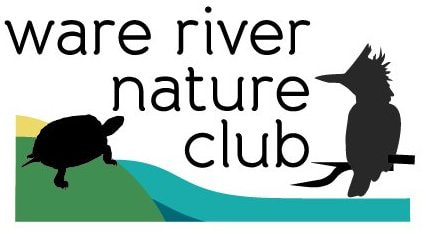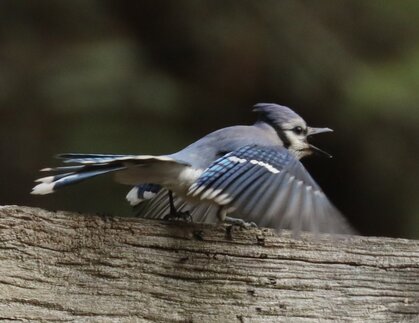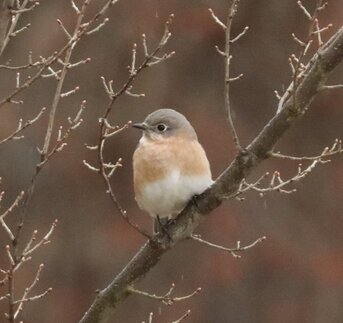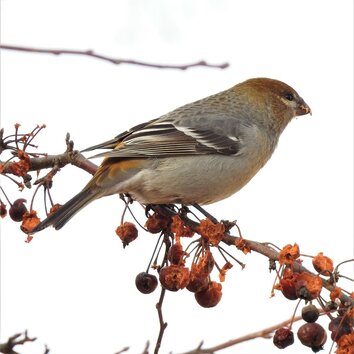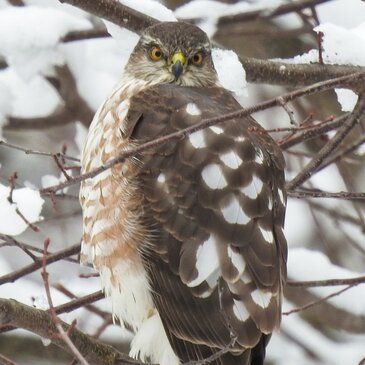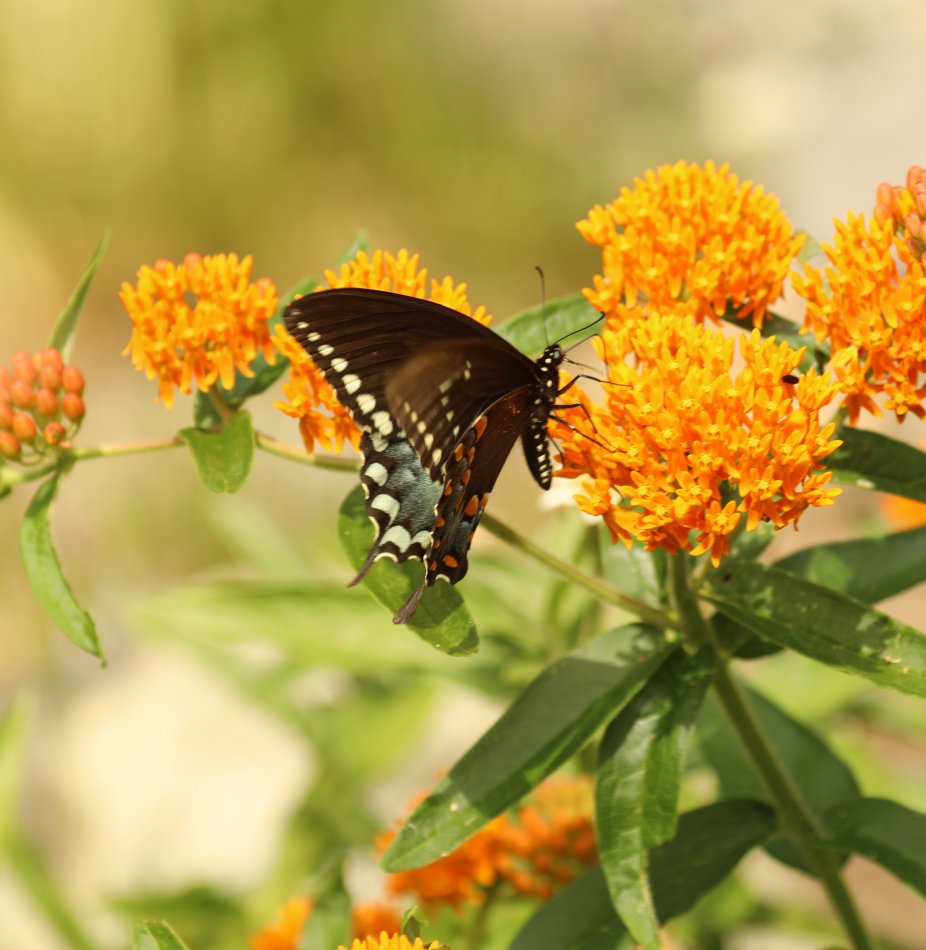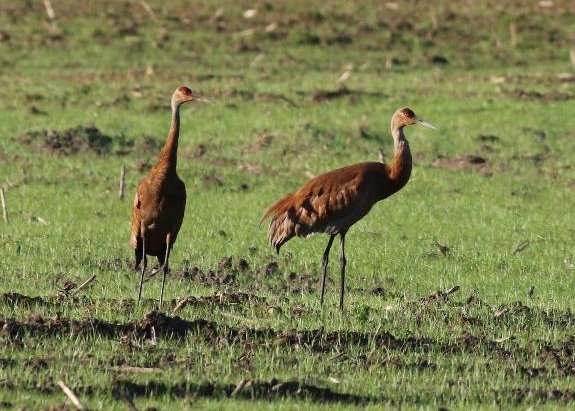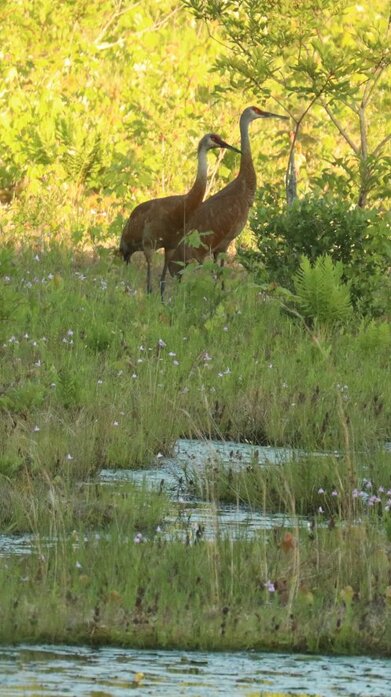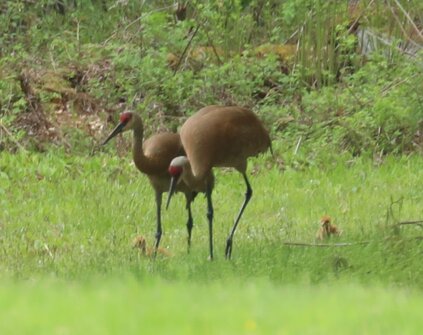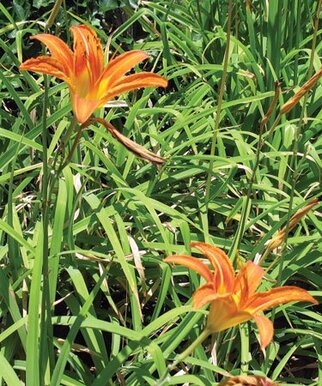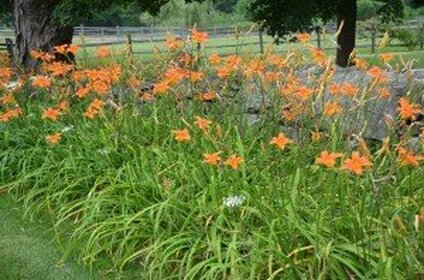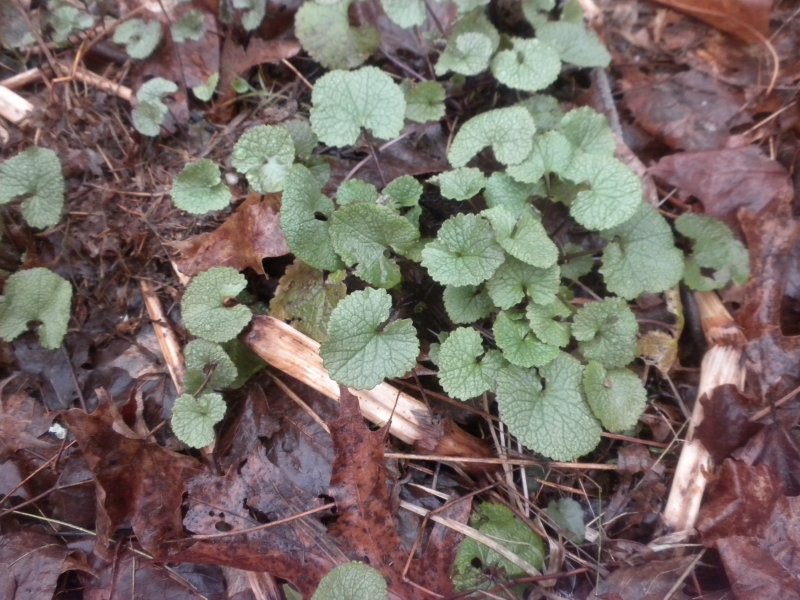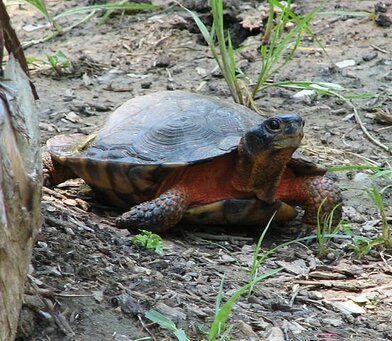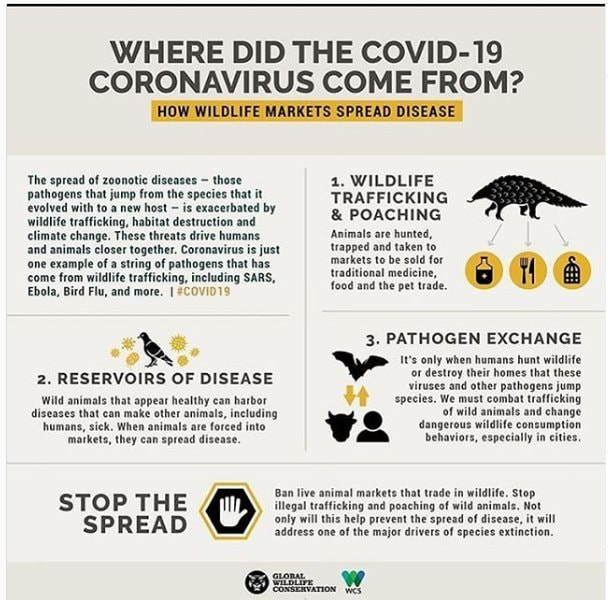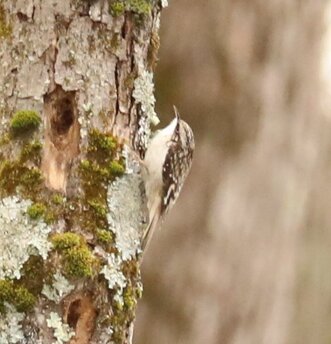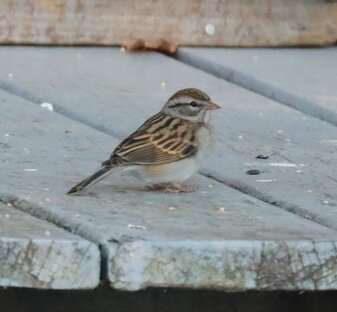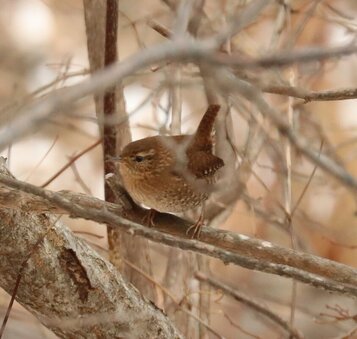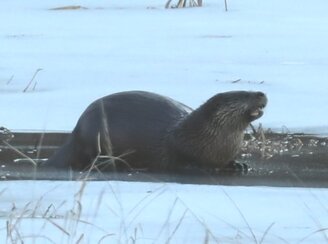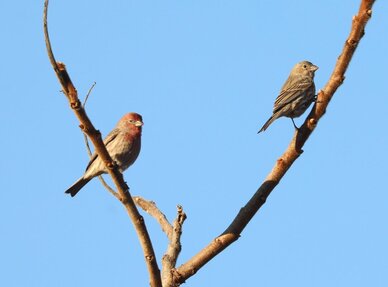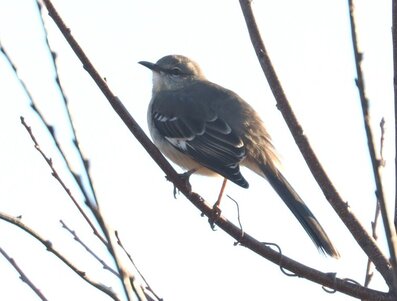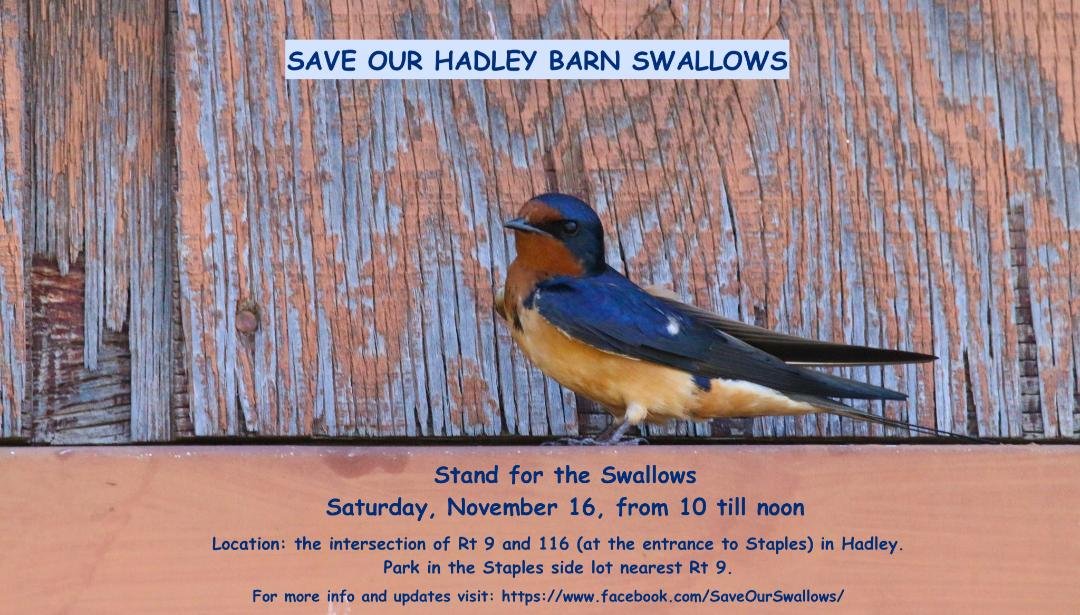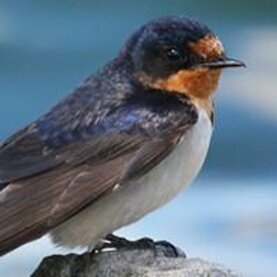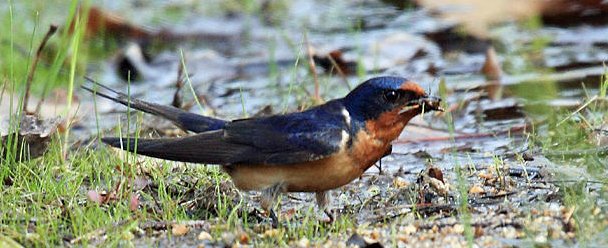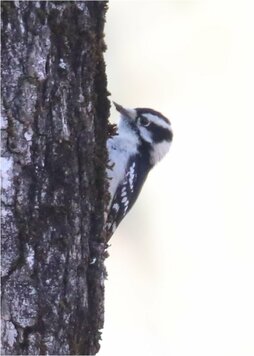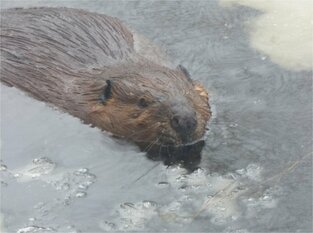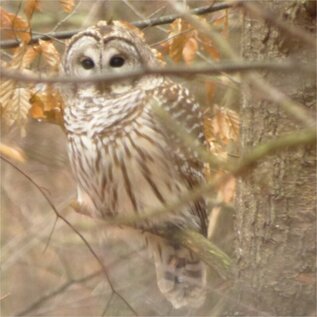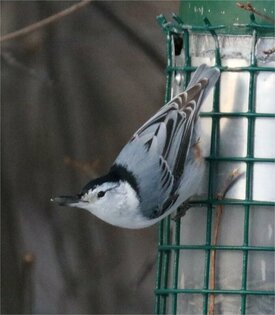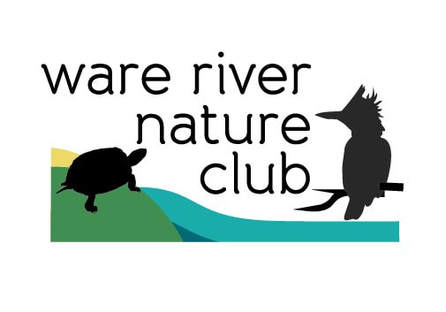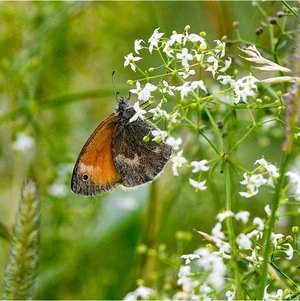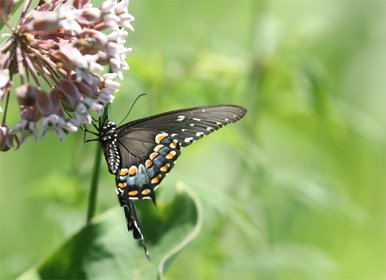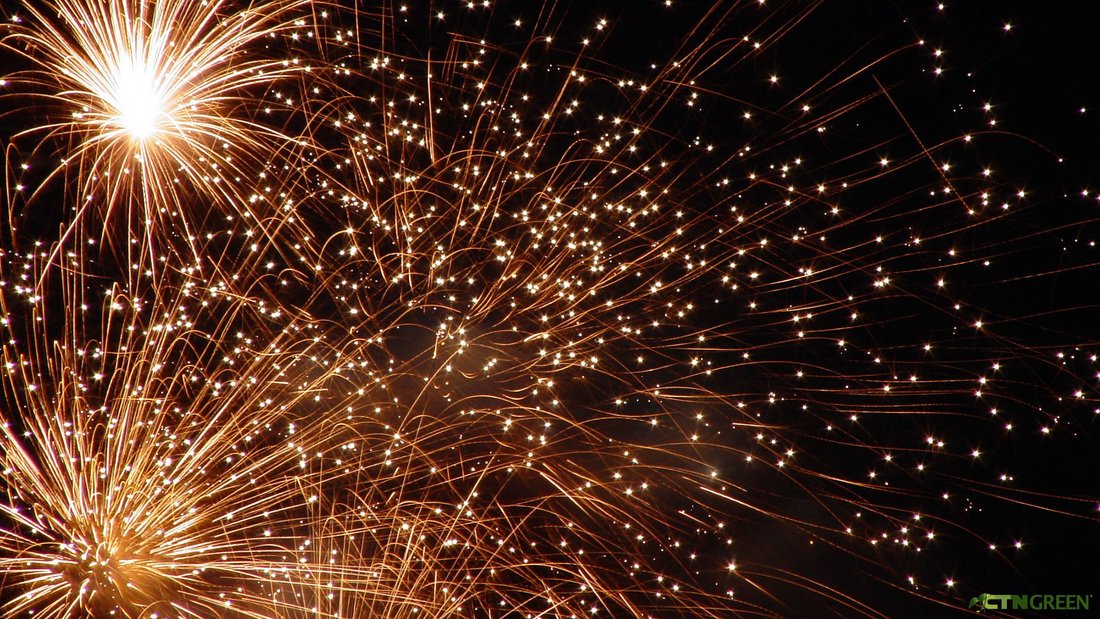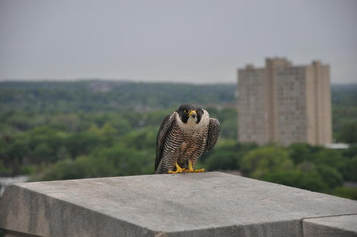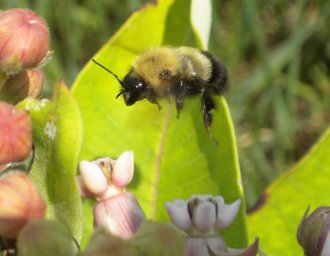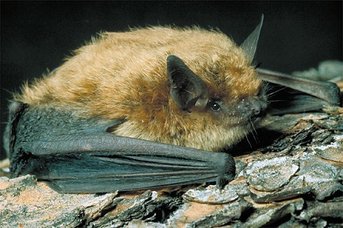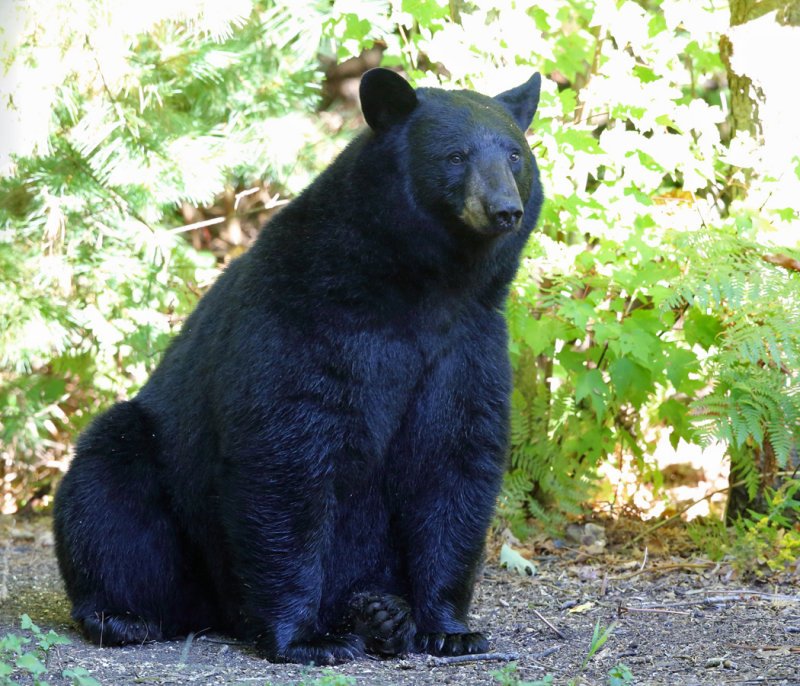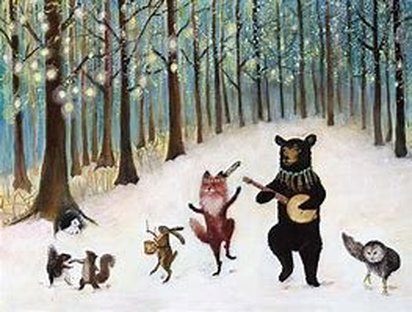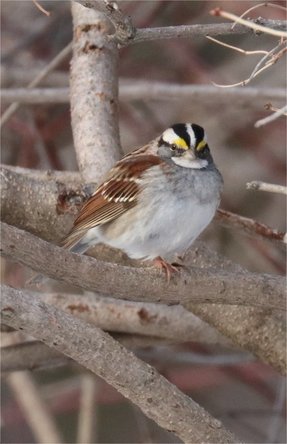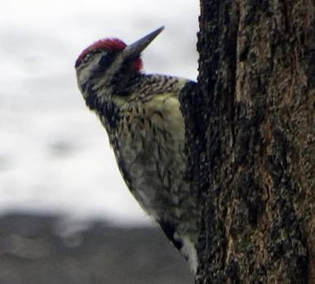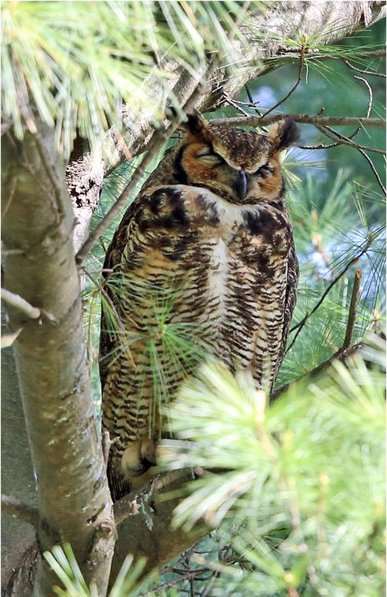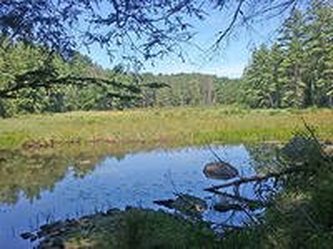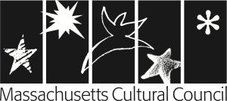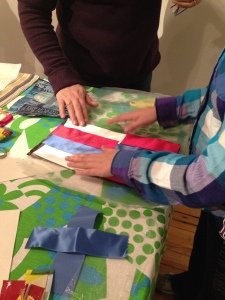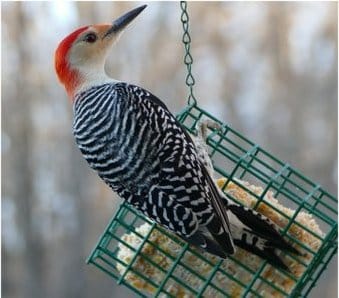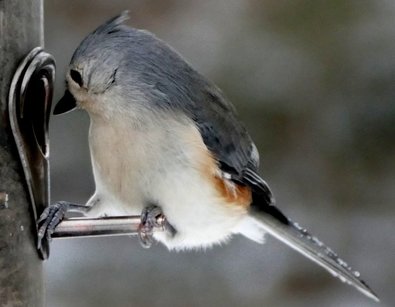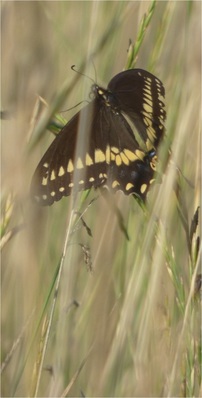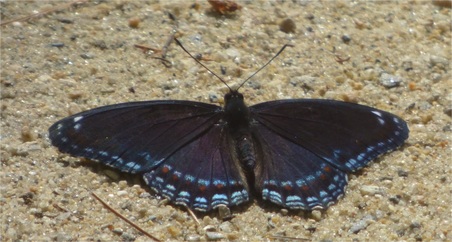ANNOUNCEMENTS
January 7, 2024
|
ATHOL CBC December 16, 2023
Compiler: Dave Small TOTAL SPECIES: 72 + 3 count week Total Individuals: 10,328 Canada Goose 302, Am. Black Duck 3, Mallard 201, Northern Pintail 3, Ring-necked Duck 27, Bufflehead 3, Common Goldeneye 9, Hooded Merganser 136, Common Merganser 373, Red-breasted Merganser 1, Common Loon 2, Wild Turkey 19, Ruffed Grouse 1, Ring-necked Pheasant (CW),Bald Eagle 15, Northern Harrier 1, Cooper's Hawk 4, Sharp-shinned Hawk 4, Red-shouldered Hawk 2, Red-tailed Hawk 16, Ring-billed Gull 16, Herring Gull 21, Rock Pigeon 198, Mourning Dove 114, Great Horned Owl 4, Barred Owl 4, Northern Saw-whet Owl 1, Belted Kingfisher(CW), Red-bellied Woodpecker 26, Yellow-bellied Sapsucker 1, Downy Woodpecker 69, Hairy Woodpecker 28, Northern Flicker 3, Pileated Woodpecker 7, Blue Jay 267, American Crow 119, Common Raven 32, Black-capped Chickadee 599, Tufted Titmouse 304, Red-breasted Nuthatch 22, White-breasted Nuthatch 146, Brown Creeper 22, Carolina Wren 52, Winter Wren 4, Golden-crowned Kinglet 116, RUBY-CROWNED KINGLET 1, PINE WARBLER 3, Eastern Bluebird 198, HERMIT THRUSH(CW) American Robin 113, GRAY CATBIRD 1, Northern Mockingbird 4, European Starling 1184, Horned Lark 100, Snow Bunting 2, Cedar Waxwing 217, EASTERN TOWHEE 1, FIELD SPARROW 4, American Tree Sparrow 37, Fox Sparrow 2, Song Sparrow 64, Swamp Sparrow 6, White-throated Sparrow 392, Dark-eyed Junco 2644, Northern Cardinal 124, Red-winged Blackbird 123, Brown-headed Cowbird 11, COMMON GRACKLE 71, European Starling 898, Purple Finch 7, House Finch 275, RED CROSSBILL 53, WHITE-WINGED CROSSBILL 8, Pine Siskin 877, American Goldfinch 442, House Sparrow 467 GROTON-OXBOW CBC December 17, 2023
Compiler: Jon Skinner TOTAL SPECIES: 86 TOTAL INDIVIDUALS: 16,681 Canada Goose 1219, Mute Swan 9, Wood Duck 1, Gadwall 3, American Black Duck 18, Mallard 504, Northern Pintail 1, Northern Shoveler (CW), Green-winged Teal 1, Ring-necked Duck 60, Common Goldeneye 1, Hooded Merganser 53, Common Merganser 22, Wild Turkey 44, Ruffed Grouse 1, Rock Pigeon 524, Mourning Dove 226, AMERICAN COOT 1, AMERICAN WOODCOCK 1, Ring-billed Gull 23, Herring Gull 3, Great Blue Heron 8, TURKEY VULTURE 1, Northern Harrier 2, Sharp-shinned Hawk 3, Cooper's Hawk 5, Bald Eagle 9, Red-shouldered Hawk 7, Red-tailed Hawk 38, Eastern Screech-Owl 1, Great Horned Owl 18, Barred Owl 10, Northern Saw-whet Owl 2, Belted Kingfisher 13, Yellow-bellied Sapsucker 4, Red-bellied Woodpecker 112, Downy Woodpecker 175, Hairy Woodpecker 50, Northern Flicker 34, Pileated Woodpecker 32, American Kestrel 1, Merlin 1, EASTERN PHOEBE 1, Blue Jay 413, American Crow 1070, Common Raven 27, Black-capped Chickadee 946, Tufted Titmouse 462, Horned Lark 31, RUBY-CROWNED KINGLET 3, Golden-crowned Kinglet 204, Red-breasted Nuthatch 21, White-breasted Nuthatch 338, Brown Creeper 45, Carolina Wren 91, Winter Wren 38, European Starling 1308, Northern Mockingbird 25, Eastern Bluebird 258, Hermit Thrush 2, American Robin 406, Cedar Waxwing 58, House Sparrow 307, AMERICAN PIPIT 1, House Finch 372, Purple Finch 6, RED CROSSBILL 43, Pine Siskin 207, American Goldfinch 795, CHIPPING SPARROW 1, Field Sparrow 17, American Tree Sparrow 129, FOX SPARROW 18, Dark-eyed Junco 2171, White-throated Sparrow 603, Song Sparrow 237, Swamp Sparrow 11, Red-winged Blackbird 2168, Brown-headed Cowbird 1, RUSTY BLACKBIRD 5, Common Grackle 298, ORANGE-CROWNED WARBLER 1, PINE WARBLER 18, Yellow-rumped Warbler 2, WILSON'S WARBLER 1, Northern Cardinal 215 |
WESTMINSTER CBC January 1, 2024
Compiler: Chuck Caron TOTAL SPECIES : 68 Canada Goose 192, American Black Duck 8, Mallard 346, Hooded Merganser 56, Common Merganser 114, Bufflehead 3, Common Goldeneye 15, GREATER SCAUP 1, Wild Turkey 28, Ruffed Grouse 1, Bald Eagle 11, Sharp-shinned Hawk 2, Cooper’s Hawk 4, Red-shouldered Hawk 4, Red-tailed Hawk 32, Ring-billed Gull 15, Herring Gull 106, Great Black-backed Gull 2, Rock Pigeon 152, Mourning Dove 36, Great Horned Owl 1, Barred Owl 2, Northern Saw-whet Owl 1, Belted Kingfisher 3, Yellow-bellied Sapsucker 6, Red-bellied Woodpecker 30, Downy Woodpecker 148, Hairy Woodpecker 38, Northern Flicker 5, Pileated Woodpecker 17, EASTERN PHOEBE 1, NORTHERN SHRIKE 1, Blue Jay 252, American Crow 695, Common Raven 25, Black-capped Chickadee 1181, Tufted Titmouse 455, Golden-crowned Kinglet 190, RUBY-CROWNED KINGLET 1, Red-breasted Nuthatch 40, White-breasted Nuthatch 266, Brown Creeper 33, Carolina Wren 38, Winter Wren 4, Eastern Bluebird 168, HERMIT THRUSH 4, American Robin 109, Northern Mockingbird 2, European Starling 1787, Cedar Waxwing 89, EASTERN TOWHEE 2, American Tree Sparrow 88, White-throated Sparrow 262, Song Sparrow 52, Swamp Sparrow 6, FOX SPARROW 3, Dark-eyed Junco 2782, PINE WARBLER 1, Northern Cardinal 146, Red-winged Blackbird 395, RUSTY BLACKBIRD 1, Purple Finch 17, House Finch 275, Red Crossbill 113, American Goldfinch 779, Pine Siskin 557, EVENING GROSBEAK 3, House Sparrow 398 QUABBIN CBC December 30, 2023
Compiler: Scott Surner TOTAL SPECIES: 79 + 3 count week Canada Goose 192, Mallard 115, American Black Duck 125, Ring-necked Duck 2, Greater/Lesser Scaup 2, WHITE-WINGED SCOTER 1, Bufflehead 1, Common Goldeneye 15, Hooded Merganser 62, Common Merganser 1007, Wild Turkey 24, Ruffed Grouse 8, Horned Grebe 4, RED-NECKED GREBE 1, Rock Pigeon 76, Mourning Dove 70, Ring-billed Gull 246, Herring Gull 2, Common Loon 16, Great Blue Heron 7, BLACK VULTURE 1, Northern Harrier 2, Sharp-shinned Hawk (CW), Cooper’s Hawk 2, Bald Eagle 24 (10 imm/14 adult), Red-shouldered Hawk 3, Red-tailed Hawk 11, Eastern Screech- Owl 1, Great Horned Owl 11, Barred Owl 3, Northern Saw-whet Owl 9, Belted Kingfisher 4, Yellow-bellied Sapsucker 3, Red-bellied Woodpecker 52, Downy Woodpecker 77, Hairy Woodpecker 35, Pileated Woodpecker 9, Northern Flicker 17, EASTERN PHOEBE 1, SAY'S PHOEBE 1, Blue Jay 258, American Crow 127, Common Raven 52, Black-capped Chickadee 484, Tufted Titmouse 288, RUBY-CROWNED KINGLET 1 , Golden-crowned Kinglet 218, White-breasted Nuthatch 131, Red-breasted Nuthatch 64, Brown Creeper 31, Winter Wren 13, Carolina Wren 41, European Starling 1259, GRAY CATBIRD 2, Northern Mockingbird 6, Eastern Bluebird 100, Hermit Thrush 2, American Robin 199, Cedar Waxwing 96, House Sparrow 440, House Finch 52, Purple Finch 5, COMMON REDPOLL 5, RED CROSSBILL 119, WHITE-WINGED CROSSBILL 1, Pine Siskin 1687, American Goldfinch 209, Snow Bunting 1, FIELD SPARROW 2, American Tree Sparrow 95, FOX SPARROW 5, Dark-eyed Junco 2260, White-throated Sparrow 865, SAVANNAH SPARROW 1, Song Sparrow 93, Swamp Sparrow (CW), EASTERN TOWHEE 8, Red-winged Blackbird, 385, Brown-headed Cowbird 320, Common Grackle 1, PINE WARBLER (CW), Northern Cardinal 159 |
|
ATHOL CBC December 17, 2022
Compiler: Dave Small TOTAL SPECIES: 63 + 2 count week Total Individuals: 8,252 Canada Goose 96, Wood Duck 1, Am. Black Duck 57, Mallard 294, Ruddy Duck 1, Hooded Merganser 147, Common Merganser 15, Ring-necked Pheasant 3, Wild Turkey 237, Common Loon 2, Great Blue Heron 1, Bald Eagle 15, Northern Harrier 1, Cooper's Hawk 1, Red-shouldered Hawk 6, Red-tailed Hawk 11, Ring-billed Gull 10, Herring Gull 2, Rock Pigeon 308, Mourning Dove 691, Great Horned Owl 1, Barred Owl 4, Belted Kingfisher 2, Red-bellied Woodpecker 41, Yellow-bellied Sapsucker 1, Downy Woodpecker 144, Hairy Woodpecker 59, Northern Flicker 2, Pileated Woodpecker 11, Blue Jay 360, American Crow 92, Common Raven 52, Horned Lark 26 , Black-capped Chickadee 898, Tufted Titmouse 403, Red-breasted Nuthatch 24, White-breasted Nuthatch 168, Brown Creeper 12, Carolina Wren 30, Winter Wren 5, Golden-crowned Kinglet 18, Eastern Bluebird 215, Hermit Thrush 1, American Robin 141, GRAY CATBIRD 1, Northern Mockingbird 5, European Starling 1184, Cedar Waxwing 141, EASTERN TOWHEE 1, Am. Tree Sparrow 73, Fox Sparrow (CW), Song Sparrow 50, Swamp Sparrow 3, White-throated Sparrow 27, Dark-eyed Junco 607, Northern Cardinal 197, Red-winged Blackbird 5, Brown-headed Cowbird 1, PINE GROSBEAK (CW), Purple Finch 29, House Finch 237, Pine Siskin 5, American Goldfinch 283, EVENING GROSBEAK 144, House Sparrow 650 QUABBIN CBC December 31, 2022
Compiler: Scott Surner TOTAL SPECIES: 67 Canada Goose 15, American Black Duck 48, Mallard 144, Ring-necked Duck 17, Greater Scaup 1, Lesser Scaup 1, Northern Pintail CW, Bufflehead 2, Common Goldeneye 3, Hooded Merganser 168, Common Merganser 573 (Duck sp. 216), Red-breasted Merganser 1, Ruffed Grouse 11, Wild Turkey 103, RED-THROATED LOON 1, Common Loon 12, Horned Grebe 16, RED-NECKED GREBE 1, NORTHERN HARRIER 1, Bald Eagle 30, Cooper’s Hawk 4, Red-shouldered Hawk 2, Red-tailed Hawk 40, Ring-billed Gull 145, Herring Gull 3, (Gull species 81), Rock Pigeon 110, Mourning Dove 311. Eastern Screech-Owl 1, Great Horned Owl 9, Barred Owl 30**, Northern Saw-whet Owl 7, Red-bellied Woodpecker 33, Yellow-bellied Sapsucker 6**, Downy Woodpecker 88, Hairy Woodpecker 50,Northern Flicker 4, Pileated Woodpecker 24, PEREGRINE FALCON 1, Blue Jay 169, American Crow 169, Common Raven 47, Black-capped Chickadee 978, Tufted Titmouse 225, Red-breasted Nuthatch 178, White-breasted Nuthatch 162, Brown Creeper 30, Winter Wren 5, Carolina Wren 21, Golden-crowned Kinglet 31, Eastern Bluebird 101, American Robin 513, Northern Mockingbird 5, European Starling 811,Cedar Waxwing 17, Snow Bunting 1, American Tree Sparrow 86, White-throated Sparrow 29, Song Sparrow 35, Dark-eyed Junco 312 Northern Cardinal 101, Red-winged Blackbird 56, Purple Finch 1, House Finch 44, Red Crossbill 3, American Goldfinch 82, House Sparrow 467 ** High count CW= count week |
GROTON-OXBOW CBC
December 18, 2022 Compiler: Jon Skinner TOTAL SPECIES: 77 + 3 count week Canada Goose 1137, Mute Swan 21, Wood Duck 4, Black Duck 16, American Wigeon 1, Mallard 720, Northern Pintail 10, Green-winged teal 20, Lesser Scaup 1, Greater Scaup 1, Common Goldeneye 4, Hooded Merganser 54, Common Merganser 27, Ruddy Duck 11**, Wild Turkey 126, Great Blue Heron 3, TURKEY VULTURE CW, Cooper's Hawk 5, Red-shouldered Hawk 1, Red-tailed Hawk 45, Bald Eagle 3, American Kestrel 1, Peregrine Falcon 1*, Northern Shrike 1, Ring-billed Gull 8, Herring Gull 6, GREAT CORMORANT 1*, Rock Pigeon 135, Mourning Dove 183, Eastern Screech-Owl 4, Great Horned Owl 21**, Barred Owl 6, Northern Saw-whet Owl 8**, Belted Kingfisher 7, Red-bellied Woodpecker 134**, Downy Woodpecker 176, Hairy Woodpecker 51, Northern Flicker 24**, Pileated Woodpecker 25, Blue Jay 589, Am. Crow 315, Common Raven 19, Black-capped Chickadee 815, Tufted Titmouse 437, Red-breasted Nuthatch 23, White-breasted Nuthatch 298, Brown Creeper 33**, Carolina Wren 45, Winter Wren 12, Golden-crowned Kinglet 35, Eastern Bluebird 256, Hermit Thrush 1, Am. Robin 457, Northern Mockingbird 25, European Starling 941, Cedar Waxwing 30, PALM WARBLER (CW)Am. Tree Sparrow 53, Field Sparrow 10**, Savannah Sparrow 1, Fox Sparrow 3, LINCOLN'S SPARROW 1, Song Sparrow 89, Swamp Sparrow 1, White-throated Sparrow 43,Dark-eyed Junco 1302, Northern Cardinal 190, Red-winged Blackbird 4, RUSTY BLACKBIRD (CW)Common Grackle 2, House Finch 347, Purple Finch 6, Am. Goldfinch 522, House Sparrow 446, EVENING GROSBEAK 12*, Red Crossbill 1, Pine Siskin 1, Snow Bunting 1 *New to count **New high count WESTMINSTER CBC January 3, 2023
Compiler: Chuck Caron TOTAL SPECIES : 55 + 1 exotic
Canada Goose 67, American Black Duck 6, Mallard 744, Hooded Merganser 4, Ring-necked Pheasant 1, Ruffed Grouse 1, Wild Turkey 118, Bald Eagle 1, Sharp-shinned Hawk 1, Cooper’s Hawk 1, Red-shouldered Hawk 1, Red-tailed Hawk 8, Ring-billed Gull 49, Herring Gull 294, ICELAND GULL 1, Great Black-backed Gull 27, Rock Pigeon 436, Mourning Dove 207, Great Horned Owl 1, Barred Owl 2, Belted Kingfisher 3, Red-bellied Woodpecker 26, Downy Woodpecker 78, Hairy Woodpecker 27, Northern Flicker 1, Pileated Woodpecker 7, NORTHERN SHRIKE 1, Blue Jay 163, American Crow 178, Common Raven 10, Black-capped Chickadee 947, Tufted Titmouse 335, Red-breasted Nuthatch 36, White-breasted Nuthatch 128, Brown Creeper 10, Carolina Wren 9, Golden-crowned Kinglet 24, Eastern Bluebird 97, Hermit Thrush 2, American Robin 207, Northern Mockingbird 2, European Starling 472, Cedar Waxwing 27, EASTERN TOWHEE 2**, American Tree Sparrow 40, White-throated Sparrow 13, Song Sparrow 10, Dark-eyed Junco 393, Northern Cardinal 83, Red-winged Blackbird 17, Purple Finch 24, House Finch 266, Red Crossbill 2, American Goldfinch 159, EVENING GROSBEAK 2, House Sparrow 461 ** High count |
February 18, 2022
|
MASS AUDUBON'S ANNUAL BIRDERS MEETING: A VIRTUAL FOUR-DAY COMMUNITY MARCH 6-7, 13-14, 2022 Mass Audubon’s annual Birders Meeting returns for its 30th year with a pair of Sunday-Monday virtual gatherings March 6-7 and 13-14, promising an especially engaging and educational series of programming focusing on birds of prey. This year’s theme is Raptor Rapture: Research & Recovery, and the four-evening event will note crucial human assistance in the inspiring recovery of some birds, while discussing population restoration strategies for species facing more recent threats such as habitat destruction, climate change, and rodenticide poisoning. This year’s sessions include:
|
|
January 10, 2022
GROTON-OXBOW CBC
December 20, 2021 Compiler: Ron Lockwood TOTAL SPECIES: 81 + 2 count week Total individuals: 10,916 Canada Goose 597, Mute Swan 24, Wood Duck 4, Northern Pintail 1, Lesser Scaup 1* Common Goldeneye 3, Hooded Merganser 85** Common Merganser 576** Red-breasted Merganser 1,* Ring-necked Pheasant 7** Ruffed Grouse 1, Wild Turkey 78, Great Blue Heron 6, Turkey Vulture (CW), Bald Eagle 9,** Northern Harrier 3**, Sharp-shinned Hawk 2, Cooper's Hawk 8, Red-shouldered Hawk 5, Red-tailed Hawk**, American Kestrel 1, Merlin 3** Ring-billed Gull 67, Herring Gull 177, Iceland Gull 2, Great Black-backed Gull 13, Common Loon 1* Rock Pigeon 466, Mourning Dove 298, Eastern Screech-Owl 4**, Great Horned Owl 14** Barred Owl 3, Northern Saw-whet Owl 2, Belted Kingfisher 8, Red-bellied Woodpecker 95 , Yellow-bellied Sapsucker 1, Downy Woodpecker 143, Hairy Woodpecker 34, Northern Flicker 21** Pileated Woodpecker 13, EASTERN PHOEBE 1, Blue Jay 310, Am. Crow 245, Common Raven 18, Horned Lark 11, Black-capped Chickadee 497, Tufted Titmouse 247, Red-breasted Nuthatch 1, White-breasted Nuthatch 221, Brown Creeper 31** Carolina Wren 53**, Winter Wren 11, Golden-crowned Kinglet 70, Ruby-crowned Kinglet 1, Eastern Bluebird 290, Hermit Thrush 4, Am. Robin 726, Gray Catbird 4** Northern Mockingbird 38, European Starling 2133, Cedar Waxwing 105, COMMON YELLOWTHROAT 1*, EASTERN TOWHEE 1, Am. Tree Sparrow 124, Field Sparrow 9** Savannah Sparrow 4, Song Sparrow 129, White-throated Sparrow 90, Dark-eyed Junco 1010, Snow Bunting 1, Northern Cardinal 224, Red-winged Blackbird 80, Common Grackle 7, Brown-headed Cowbird 16, Purple Finch 6, House Finch 147, Red Crossbill (CW), Am. Goldfinch 551, House Sparrow 262, Am. Pipit 7* *New to count **New high count |
National Audubon Society
|
December 2021
WARE RIVER NATURE CLUB IS 9 YEARS OLD. . .
and you can help us celebrate!
To mark our anniversary in February 2022,
we’re asking for contributions to a compilation entitled:
we’re asking for contributions to a compilation entitled:
TOP NATURE EXPERIENCES OF 2021:
SHARING PERSONAL HIGHLIGHTS
|
Please tell us your best nature experience of the past year. Did you encounter a rare plant you’ve always wanted to see? Did you observe a new behavior by one of your favorite bird species? Stumble into a patch of some unusual fungi? Learn a new outdoor skill? Get the mammal photograph you’ve tried to get for years? Solve a great identification puzzle?
For many of us it might be hard to select JUST ONE highlight. For others the favorite experience will be obvious and not difficult to choose. If you’re somewhere in the middle and can’t readily think of one experience that stands out, this is your opportunity to think back over the past year and all the interesting interactions you’ve had with the natural world. If you weren’t able to be outdoors, consider whether you otherwise came across some information about nature or wildlife that made a big impression. |
Send along your description of the TOP nature experience you had in 2021. Be as brief or as wordy as you like. Please send photographs or illustrations if you have them. Identify the general location of your highlight experience. Let us know your name and hometown, and how you would like to be identified in the newsletter and on the web-site; we’re happy to use just first names or initials if you prefer. We’ll publish the collection in a special issue of the newsletter and then adapt it as a permanent page on our web-site. For more information or to submit your experience: warerivernatureclub@yahoo.com |
The long-awaited legislative hearing on multiple pesticide bills before the Mass. State Legislature has been announced by Rosemary Malfi, Ph.D. Pollinator Network Coordinator, Northeast Organic Farming Association, Massachusetts Chapter (NOFA/Mass).
Click **here** to see summary of the bills under consideration, including priority bills H.926 (Schoolchildren), H.937 (Ecological Mosquito Control), H.3991 (Raptor Bill), & H.910 (Local Control).
This is a critical opportunity to demonstrate support from the movement for healthy living landscapes and toxins reduction.
Send a quick message to your legislators.
Use this Action Network Form (or send an individual email yourself) to let your legislators know about your support for the bills being heard. Ask them to attend the hearing and weigh in with the ENRA committee in support.
Attend the Watch Party!
NOFA will be hosting a "virtual watch party" for anyone and everyone to watch along! This will be a fun way to learn about the process and how we can work together to pass these bills from the committee.
Here's a direct link to the zoom registration link for the watch party
You can also read more background about the hearing on the NOFA/Mass blog and learn about the bills that will be considered.
Click **here** to see summary of the bills under consideration, including priority bills H.926 (Schoolchildren), H.937 (Ecological Mosquito Control), H.3991 (Raptor Bill), & H.910 (Local Control).
This is a critical opportunity to demonstrate support from the movement for healthy living landscapes and toxins reduction.
Send a quick message to your legislators.
Use this Action Network Form (or send an individual email yourself) to let your legislators know about your support for the bills being heard. Ask them to attend the hearing and weigh in with the ENRA committee in support.
Attend the Watch Party!
NOFA will be hosting a "virtual watch party" for anyone and everyone to watch along! This will be a fun way to learn about the process and how we can work together to pass these bills from the committee.
Here's a direct link to the zoom registration link for the watch party
You can also read more background about the hearing on the NOFA/Mass blog and learn about the bills that will be considered.
|
September 1, 2021
SORROWFUL INCIDENT AT FOSTER PARROTS SANCTUARY In March, 2020, the coronavirus pandemic brought our monthly programs and educational presentations to a halt. We were sorry to have to cancel the scheduled talk by two dedicated staff members of Rhode Island-based Foster Parrots Ltd. |
Although we had hoped to reschedule the program, the Sanctuary experienced a tragic event on April 1, 2021 when a devastating fire destroyed their facility. The lives of 95 beloved animals were lost. The website states: “Each [of the animals] had beautiful and unique personalities and were loved dearly by our staff and volunteers. All of the surviving animals are currently safe and stable. We have a long road ahead as we continue to care for our residents and begin rebuilding from the ground up. Our entire sanctuary facility will need to be rebuilt.” A fall fundraiser and memorial event will take place in Berlin, MA on October 2nd. To learn more, go to https://www.fosterparrots.com/ |
|
September 1, 2021
MONTHLY PROGRAMS AT RUTLAND LIBRARY ARE ON AGAIN! On the autumnal equinox, which falls on September 22nd this year, the Club will resume monthly in-person educational programs. Kicking off the season is Princeton artist Barry Van Dusen, and we’re really looking forward to his lively and beautifully-illustrated talk. Great programs have been lined up for October and November, too. We’re optimistic and crossing our fingers for circumstances allowing us to go forward. Health guidelines and requirements of the library as well as state mandates will be followed. We recommend that all who choose to attend are vaccinated. If protocol for indoor events is the same as when this newsletter is being written, masks may be required; and/or we can open the meeting room windows as well as take advantage of the large space to allow social distancing. |
Unfortunately, while we were able to offer remote viewing on the ZOOM platform when guest speakers were in front of their own computers, we currently don’t have the technical ability to offer the monthly programs via ZOOM. If you or someone you know can help set this up, contact warerivernatureclub@yahoo.com . |
|
April 3, 2021
EARTH DAY 2021: WIN A NATIVE TREE FOR A PLACE NEAR YOU! |
In honor of Earth Day, Ware River Nature Club will award one native tree (or a pair of native shrubs) for planting in a public space in central Worcester County. Here’s how to enter the contest:
by midnight on Earth Day, April 22nd. The winner will be selected by the WRNC Advisory Group in time for spring planting! |
|
January 15, 2021
TIME TO RENEW YOUR MEMBERSHIP Ware River Nature Club’s membership year begins on February 1st. The Club was founded in early 2013, and the inaugural event was a winter tracking excursion in Hubbardston with leaders David Brown and Joe Choiniere. The February anniversary date has been a mainstay, odd as the timing may seem. Annual dues have remained the same, too--$15 per individual or couple, $20 for a family (3 or more). Details HERE WINDOW DECALS are now available to members, so let us know if you want one. If so, be sure to include your mailing address. |
January 7, 2021
NATIONAL AUDUBON SOCIETY 121st ANNUAL
CHRISTMAS BIRD COUNTS RESULTS
|
ATHOL CBC December 19, 2020
Compiler: Dave Small TOTAL SPECIES: 66 Total Individuals: 9349 Am. Black Duck 5, Mallard 89, Hooded Merganser 4, Common Merganser 28, Ring-necked Pheasant 1, Ruffed Grouse 1, Wild Turkey 117, Common Loon 1, Bald Eagle 4, Sharp-Shinned Hawk 2, Cooper's Hawk 5, Red-shouldered Hawk 1, Red-tailed Hawk 23, Ring-billed Gull 10, Herring Gull 2, Rock Pigeon 322, Mourning Dove 482, Great Horned Owl 7, Barred Owl 14, Saw-whet Owl 1, Belted Kingfisher 1, Red-bellied Woodpecker 72, Yellow-bellied Sapsucker 4, Downy Woodpecker 166, Hairy Woodpecker 72, Northern Flicker 2, Pileated Woodpecker 8, NORTHERN SHRIKE 1, Blue Jay 1182, American Crow 91, Common Raven 29, Horned Lark 14, Black-capped Chickadee 1496, Tufted Titmouse 720, Red-breasted Nuthatch 401, White-breasted Nuthatch 301, Brown Creeper 23, Carolina Wren 35,Golden-crowned Kinglet 2, Eastern Bluebird 177,American Robin 76, Northern Mockingbird 3, European Starling 765, Cedar Waxwing 192, TENNESSEE WARBLER 1, American Tree Sparrow 47, CHIPPING SPARROW 2, Savannah Sparrow 1, Fox Sparrow 2, Song Sparrow 22, White-throated Sparrow 59,Dark-eyed Junco 891, Snow Bunting 15, Northern Cardinal 185, Red-winged Blackbird 5, Brown-Headed Cowbird 2, PINE GROSBEAK 19, Purple Finch 20, House Finch 117, Red Crossbill 3, WHITE-WINGED CROSSBILL 10, Common Redpoll 4, Pine Siskin 151, American Goldfinch 192, EVENING GROSBEAK 109, House Sparrow 542 WESTMINSTER CBC December 31, 2020
Compiler: Chuck Caron TOTAL SPECIES: 59 Canada Goose – 7 American Black Duck – 3 Mallard – 389 WOOD DUCK--5 Hooded Merganser – 5 Wild Turkey – 33 Bald Eagle--2 Sharp-shinned Hawk – 1 Cooper’s Hawk – 2 Red-shouldered Hawk – 2 Red-tailed Hawk – 21 Merlin – 2 Ring-billed Gull – 21 Herring Gull – 12 Great Black-backed Gull – 25 Rock Pigeon – 249 Mourning Dove – 135 Barred Owl – 2 Northern Saw-whet Owl – 1 Belted Kingfisher – 1 Red-bellied Woodpecker – 49 Downy Woodpecker – 126 Hairy Woodpecker –36 Northern Flicker – 3 Pileated Woodpecker – 8 RED-HEADED WOODPECKER--1 Blue Jay – 879 American Crow – 129 Common Raven – 24 Black-capped Chickadee – 1239 Tufted Titmouse – 519 RUBY-CROWNED KINGLET--1 Red-breasted Nuthatch – 66 White-breasted Nuthatch – 261 Brown Creeper – 12 Carolina Wren – 15 Winter Wren –2 Golden-crowned Kinglet – 1 Eastern Bluebird – 112 Hermit Thrush –2 American Robin – 249 Northern Mockingbird –4 European Starling –580 Cedar Waxwing – 137 EASTERN TOWHEE --1 American Tree Sparrow – 19 Song Sparrow – 6 White-throated Sparrow –21 Dark-eyed Junco – 473 Northern Cardinal –111 Red-winged Blackbird – 33 PINE GROSBEAK – 118 House Finch – 75 Red Crossbill – 29 Common Redpoll – 121 Pine Siskin –16 Evening Grosbeak--32 American Goldfinch – 128 House Sparrow – 225 QUABBIN CBC January 2, 2021
Compiler: Scott Surner TOTAL SPECIES: 61 + 2 CW American Black Duck - 47 Mallard – 103 Ring-necked Duck – 2 Bufflehead -CW Common Goldeneye – 9 Hooded Merganser – 51 Common Merganser – 149 Red-breasted Merganser -cw Ruffed Grouse -6 Wild Turkey -139 Common Loon – 5 Horned Grebe -4 Sharp-shinned Hawk -1 Cooper’s Hawk -1 Bald Eagle -16 Red-shouldered Hawk -2 Red-tailed Hawk -43 (new high) Ring-billed Gull – 113 ICELAND GULL- cw (new species for the count) Gull Species -200 Rock Pigeon – 91 Mourning Dove – 208 Eastern Screech-Owl -1 Great Horned Owl – 5 Barred Owl -3 Northern Saw-whet Owl – 2 cw= count week |
Count circle territories may be viewed here: https://audubon.maps.arcgis.com/apps/View/index.html?appid=fadfb421e95f4949bde20c29a38228bd GROTON-OXBOW CBC
December 20, 2020 Compiler: Ron Lockwood TOTAL SPECIES: 76 + 1 Count week (CW) Canada Goose – 546 Mute Swan – 26 American Black Duck – 7 Mallard – 363 Hooded Merganser – 12 Common Merganser – 10 RUDDY DUCK – 1 Ring-necked Pheasant – 1 Ruffed Grouse – 1 Wild Turkey – 210 Great Blue Heron – 1 Bald Eagle – 5 Northern Harrier – 1 Sharp-shinned Hawk – 6 Cooper’s Hawk – 17 Red-shouldered Hawk – 4 Red-tailed Hawk – 50 Merlin – 2 Ring-billed Gull – 31 Herring Gull – 4 Great Black-backed Gull – cw Rock Pigeon – 276 Mourning Dove – 354 Eastern Screech Owl – 5 Great Horned Owl – 23 Barred Owl – 6 Long-eared Owl – 1 Northern Saw-whet Owl – 2 Belted Kingfisher – 6 Red-bellied Woodpecker – 110 Yellow-bellied Sapsucker – 2 Downy Woodpecker – 191 Hairy Woodpecker – 69 Northern Flicker – 17 Pileated Woodpecker – 29 Blue Jay – 721 American Crow – 315 Common Raven – 20 Horned Lark – 58 Black-capped Chickadee – 689 Tufted Titmouse – 499 Red-breasted Nuthatch – 156 White-breasted Nuthatch – 296 Brown Creeper – 22 HOUSE WREN – 1 Carolina Wren – 49 (tied for high count, 2014) Winter Wren – 7 Golden-crowned Kinglet – 3 Eastern Bluebird – 197 Hermit Thrush – 3 American Robin – 230 Northern Mockingbird – 37 European Starling – 649 Cedar Waxwing – 73 Yellow-rumped Warbler – 3 American Tree Sparrow – 146 Field Sparrow – 3 Song Sparrow – 140 Swamp Sparrow – 3 White-throated Sparrow – 56 Dark-eyed Junco – 925 LAPLAND LONGSPUR – 1 Snow Bunting – 36 Northern Cardinal – 227 Red-winged Blackbird – 45 Rusty Blackbird – 2 Common Grackle – 26 Brown-headed Cowbird – 2 PINE GROSBEAK – 12 Purple Finch – 5 House Finch – 172 WHITE-WINGED CROSSBILL – 2 Red Crossbill – 26 Common Redpoll – 54 Pine Siskin – 22 American Goldfinch – 307 House Sparrow – 314 QUABBIN CBC continued:
Belted Kingfisher -5 Red-bellied Woodpecker -46 Yellow-bellied Sapsucker – 1 Downy Woodpecker -86 Hairy Woodpecker -33 Northern Flicker -7 Pileated Woodpecker -18 Merlin -3 (new high) Blue Jay -532 American Crow -123 Common Raven -28 Black-capped Chickadee -920 Tufted Titmouse -348 (new high) Red-breasted Nuthatch -240- 3rd highest count White-breasted Nuthatch -202 Brown Creeper -26 Winter Wren -2 Carolina Wren -30 (New high) Golden-crowned Kinglet -7 Eastern Bluebird -73 Hermit Thrush -1 American Robin -158 Northern Mockingbird -7 European Starling -585 Cedar Waxwing -2 American Tree Sparrow -60 Dark-eyed Junco -416 White-throated Sparrow -59 Song Sparrow -30 Northern Cardinal -127 Red-winged Blackbird -6 House Finch -56 Purple Finch -2 Red Crossbill -15 Common Redpoll -55 Pine Siskin -1 American Goldfinch -30 House Sparrow -533 |
|
August 1, 2020
|
CONTRIBUTING NATURE ARTICLES, ARTWORK & PHOTOS Perhaps the changes in your usual schedule have led you in a more creative direction these past few months. Two excellent local publications are always looking for submissions to their journals. Bird Observer: The Birding Journal for New England and Massachusetts Butterflies are interested in seeing what you might have to offer. Bird Observer welcomes the submission of manuscripts, artwork, or photographs for consideration for publication. Articles generally fit into the categories of feature articles of scientific, technical, or general nature (more than two pages), articles on birding locations (both one-page articles and more substantial articles with full page maps), and Field Notes (one or two pages). https://www.birdobserver.org/Contact-Us/Submission-Guidelines Massachusetts Butterflies will consider publishing detailed butterfly observations or life history notes, essays, butterfly-finding locations, poetry, photographs, and original art-work. Contact editor Bill Benner at bill@massbutterflies.org with your ideas or submissions. |
|
June 22, 2020
HARDWICK SANDHILL CRANES RELOCATED
In our last newsletter, we announced the first documented breeding of Sandhill Cranes in Worcester County, with the discovery of a pair with recently-hatched chicks in Hardwick. On June 14th, nearly a month after the young were hatched, the pair of adults was found in a large beaver pond wetland with a large shrub component, habitat they typically prefer. The pair was observed for several hours over a period of three days, and unfortunately the young birds were not seen. Young birds are vulnerable to myriad predators, but often one chick survives. Sadly this was not the case for this pair. It is hoped that the pair will attempt to re-nest in the area in the future. Meanwhile, a different pair of cranes has been observed in New Braintree since early spring. (There have been New Braintree reports in past years, too.) Many thanks to Jim "Hikingcamera" Morelly for letting us know about his sighting on 30 & 31 May 2020 at Winimusset WMA. |
May 28, 2020
SANDHILL CRANES
|
Sandhill Cranes, still considered rare-to-uncommon in Massachusetts despite a few instances of confirmed breeding in the western part of the state and an increasing number of March-November sightings scattered around the state, have not been known to breed in Worcester County.
In mid-May, two adults with two recently-hatched young were observed and photographed in Hardwick, likely the first documented breeding record for Worcester County! Generating much local excitement, the family was observed for a 2+ day period in a privately-owned grassy field alongside the marshy edge of a beaver pond. The birds departed the site around May 20th and have not been relocated. It’s speculated that the family headed west—although there is no way to be certain!—so if you are exploring the west side of Hardwick or the eastern shore of Quabbin Reservoir, keep an eye out for this special foursome. Please contact warerivernatureclub@yahoo.com with any Worcester County sightings of this species and especially any family group. |
|
April 15, 2020
SPROUTING NOW NEAR YOU:
ANOTHER PROBLEM INVASIVE Marching up and down our roadsides and spreading into nearby properties, common orange daylilies (Hemerocallis fulva), also known as ditch lilies or tiger lilies, are extremely invasive and hard to kill once established. Native to Japan, this plant was introduced into the United States in the late 19th century as an ornamental. Their pread is accelerated by disturbance such as highway and utility construction. Daylilies established in natural areas pose a threat to native plants in field, meadows, floodplains, moist woods and forest edges. Once established, daylily multiplies and spreads to form dense patches that displace native plants. The thick tubers make it a challenge to control. |
|
CONTROL METHODS
Do not plant daylilies known to have weedy habits. Plants can be dug up using a shovel to loosen the soil so that the entire root system with tubers can be removed. Otherwise, re-sprouting will likely occur. For the same reason, do not put tubers in the compost pile. To destroy the plant and tubers once dug up, kill by covering with black plastic or burning. Unwanted plant material can also be placed in household rubbish for removal to a landfill or incinerator, but bagging (plastic) and eliminating in this manner strikes us as the least desirable method from an ecological standpoint. |
FOR A HAND-OUT/POSTER (Garlic Mustard & Hemerocallis fulva) TO PRINT/SHARE, CLICK HERE.
|
March 30, 2020
IF YOU HAVE EXTRA TIME AND THE INCLINATION. . .
Here’s a suggestion for an outdoor activity that will help your local environment and provide a change of scenery from the usual indoor tasks and self-isolation due to the Covid-19 pandemic. It’s simply pulling weeds. Because of the abundance and nature of this particular weed, though, you can feel quite virtuous for spending a little bit of time yanking the obnoxious invasive plant from roadsides and “waste areas.” Garlic mustard (Alliaria petiolate) has already sprouted and is leafing out in central Massachusetts. The roots of garlic mustard exude antifungal chemicals into the soil that disrupt associations between mycorrhizal fungi and native plants, suppressing native plant growth. It is not beneficial to wildlife or insects; it’s difficult to control once it has reached a site; it can cross-pollinate or self-pollinate, it has a high seed production rate, it out-competes native vegetation and it can establish in a relatively stable forest understory. |
. . .HELP CENTRAL MASSACHUSETTS GET RID OF GARLIC MUSTARD!
Garlic mustard can grow in full sun or full shade, making it a threat to a wide variety of our native plants and habitats. Each plant can produce up to 5,000 seeds which remain viable in the soil for five years or more. Is that enough negative news to inspire you? Needless to say, this is a pest plant worthy of aggressive eradication tactics!
Manual removal of this plant has been shown to prevent the spread. Pulling by hand must remove at least the upper half of the root to prevent a new stalk from forming, and this is most easily accomplished in the spring when the soil is soft. Hand-pulling should be performed before seeds are formed and needs to be continued for up to five years in order to deplete any established seed bank. Since seeds have not yet formed, garlic mustard may be left on pavement or driveways to dry out and die(before composting) at this time of year, or it can be bagged with regular trash. |
|
March 31, 2020
SUPPORT RARE AND ENDANGERED SPECIES IN MASSACHUSETTS MassWildlife’s Natural Heritage & Endangered Species Program is responsible for the conservation and protection of wildlife species that are not considered game species and the natural communities that make up their habitats. The focus of the Program is on conservation and restoration of the 427 native plants and animals listed under the Massachusetts Endangered Species Act. Funding for the Program relies, in part, on individual contributions, NOT on general fund tax dollars. Your help does make a difference! It supports the field surveys, research, habitat management, regulatory review, and land protection for the hundreds of rare creatures and plants in the Bay State. If you care about the future of our wildlife and wild places here in Massachusetts, you can contribute in one of several ways: 1 - We’re in tax filing season -- Make a donation on your MA state income tax return on LINE 33a for Endangered Wildlife Conservation. 2 - Make a direct, tax-deductible donation --Write a check payable to “Comm. of MA-NHESP” and mail to: MassWildlife, 1 Rabbit Hill Road, Westborough, MA 01581 |
3 - Donate online with your credit card as a “Guest Customer” through MassFishHunt, MassWildlife’s licensing system.
Just type MassFishHunt https://www.ma.wildlifelicense.com/IS/Customer/InternetCustomerSearch into your browser and log in as a Guest Customer. Additional ways to support NHESP'S efforts can be found at http://www.mass.gov/service-details/support-endangered-species-conservation |
April 15, 2020 NOTICE RE: COVID-19 CORONAVIRUS & UPCOMING EVENTS
We recognize the seriousness of this situation and are following reports and recommendations as they unfold.
Programs and field trips have been suspended until at least May 15th.
Meanwhile, please take all recommended precautions and stay healthy!
We recognize the seriousness of this situation and are following reports and recommendations as they unfold.
Programs and field trips have been suspended until at least May 15th.
Meanwhile, please take all recommended precautions and stay healthy!
120th Annual Christmas Bird Count
AREA RESULTS
|
Quabbin Christmas Bird Count
December 28, 2019 Compiler: Scott Surner Mallard- 117 American Black Duck-89 Greater Scaup- CW Common Goldeneye-16 Hooded Merganser- 35 Common Merganser- 275 Ring-necked Pheasant -1 Ruffed Grouse – 11 Wild Turkey -89 Horned Grebe- 4 Red-Necked Grebe -1 (6th record) Rock Pigeon – 140 Mourning Dove -150 Ring-billed Gull – 288 HC Herring Gull – 18 Great Black-backed Gull –CW Common Loon -5 Great Blue Heron – 1 Sharp-shinned Hawk -1 Bald Eagle- 29 [Adults -17 Imm. -12] Red-shouldered Hawk -1 Red-tailed Hawk – 30 Great Horned Owl – 6 Barred Owl – 2 Northern Saw-whet Owl – 5 Belted Kingfisher – 5 Red-bellied Woodpecker- 39 Yellow-bellied Sapsucker – 4 Downy Woodpecker – 96 Hairy Woodpecker – 23 Northern Flicker – 9 Pileated Woodpecker -17 Eastern Phoebe- CW Blue Jay – 216 American Crow – 162 Common Raven – 23 Black-capped Chickadee – 660 Tufted Titmouse – 271 Red-breasted Nuthatch – 44 White-breasted Nuthatch – 163 Brown Creeper – 25 Winter Wren -5 Carolina Wren- 20 HC Golden-Crowned Kinglet -97 Ruby-crowned Kinglet CW Eastern Bluebird -119 HC American Robin - 114 Hermit Thrush – 1 Gray Catbird -2 HC Northern Mockingbird -8 European Starling - 248 Cedar Waxwing – 164 House Sparrow – 625 Westminster
Christmas Bird Count January 4, 2020 Compiler: Chuck Caron Canada Goose 15 Black Duck 1 Mallard 256 Hooded Merganser 11 Common Merganser 4 Wild Turkey 167 Ruffed Grouse 1 Bald Eagle CW Sharp-shinned Hawk 2 Cooper's Hawk 3 Red-shouldered Hawk 1 Red-tailed Hawk 13 Ring-billed Gull 15 Herring Gull 51 Great Black-backed Gull 30 Rock Pigeon 378 Mourning Dove 125 Great Horned Owl CW Barred Owl 4 Belted Kingfisher 1 YELLOW-BELLIED SAPSUCKER 2 Red-bellied Woodpecker 26 Downy Woodpecker 91 Hairy Woodpecker 23 |
House Finch – 33
Purple Finch – 3 American Goldfinch – 210 American Tree Sparrow – 15 (all time low) Dark-eyed Junco – 375 White-throated Sparrow – 71 Song Sparrow – 30 Red-winged Blackbird- 6 Brown-headed Cowbird – 1 Yellow-rumped Warbler – 1 (3rd record) Northern Cardinal – 96 60 Species - Individuals -5201 Mammals
Eastern Cottontail -1 Gray Squirrel -50 Red Squirrel- 10 Eastern Chipmunk-2 Porcupine-1 Beaver-2 River Otter-1 Red Fox-1 White-tailed Deer-1 Moose-1 HC Record high count CW Seen count week 3 days before/after Northern Flicker 5
Pileated Woodpecker 8 Merlin 1 Northern Shrike CW Blue Jay 315 American Crow 106 Common Raven 5 Black-capped Chickadee 786 Tufted Titmouse 393 HC Red-breasted Nuthatch 15 White-breasted Nuthatch 130 Brown Creeper 13 Winter Wren 1 Carolina Wren 6 Golden-crowned Kinglet 17 Eastern Bluebird 50 American Robin 270 Hermit Thrush 1 Gray Catbird 1 Northern Mockingbird 3 European Starling 376 Cedar Waxwing 234 American Tree Sparrow 29 Song Sparrow 48 White-throated Sparrow 39 CHIPPING SPARROW 2 Dark-eyed Junco 704 Northern Cardinal 113 House Finch 76 American Goldfinch 169 House Sparrow 340 |
January 16, 2020
HOME OF BARN SWALLOW COLONY DESTROYED BY USFWS
From The Daily Hampshire Gazette
HADLEY — A large barn at the center of a debate between advocates hoping to preserve it as a continued spring and summer nesting site for barn swallows and officials at the U.S. Fish and Wildlife concerned about the building’s safety was demolished January 6th.
https://www.gazettenet.com/Stables-building-in-Hadley-where-barn-swallows-have-nested-comes-down-31794840?fbclid=IwAR0hKePcKiWf2cRa7rva0R-5bRH5GwT-7Oe2dlofIYP5floLCZyMNgto8C0
We are heartbroken about this! USFWS refused to consider other options. From the day it acquired the homely building the Service was determined to get rid of it and make other plans for the site. Ironically, Service staff more than once enthusiastically talked about installing an aerial insectivore exhibit to educate visitors about swallows, swifts, bats, etc. We are scratching our heads and wondering why an active swallow colony couldn’t be designated as important habitat and a public education site. (As a matter of fact, this apparently was one option the Service could have selected, but didn’t.) The Service gradually built its case for leveling the building by ignoring the opinions of construction professionals and other experts, and set about gutting the interior of the building while protests and public hearings were going strong. We think this situation reflects the horrible anti-environmental attitude of the current Federal administration as a whole.
We are very grateful to the many volunteers and supporters who put countless months and so many resources into the efforts to protect this vital swallow habitat! Kudos to Mara Silver who studied this colony for many years and helped gather valuable information about Barn Swallow ecology and life history. We know that Mara and all the others who worked on this effort are also heartbroken. As for the swallows--our deepest sympathies to them for the loss of their long-time nesting grounds.
We must encourage Fort River/Hadley area landowners with suitable structures to keep the structures open and allow returning Barn Swallows to nest in them.
HOME OF BARN SWALLOW COLONY DESTROYED BY USFWS
From The Daily Hampshire Gazette
HADLEY — A large barn at the center of a debate between advocates hoping to preserve it as a continued spring and summer nesting site for barn swallows and officials at the U.S. Fish and Wildlife concerned about the building’s safety was demolished January 6th.
https://www.gazettenet.com/Stables-building-in-Hadley-where-barn-swallows-have-nested-comes-down-31794840?fbclid=IwAR0hKePcKiWf2cRa7rva0R-5bRH5GwT-7Oe2dlofIYP5floLCZyMNgto8C0
We are heartbroken about this! USFWS refused to consider other options. From the day it acquired the homely building the Service was determined to get rid of it and make other plans for the site. Ironically, Service staff more than once enthusiastically talked about installing an aerial insectivore exhibit to educate visitors about swallows, swifts, bats, etc. We are scratching our heads and wondering why an active swallow colony couldn’t be designated as important habitat and a public education site. (As a matter of fact, this apparently was one option the Service could have selected, but didn’t.) The Service gradually built its case for leveling the building by ignoring the opinions of construction professionals and other experts, and set about gutting the interior of the building while protests and public hearings were going strong. We think this situation reflects the horrible anti-environmental attitude of the current Federal administration as a whole.
We are very grateful to the many volunteers and supporters who put countless months and so many resources into the efforts to protect this vital swallow habitat! Kudos to Mara Silver who studied this colony for many years and helped gather valuable information about Barn Swallow ecology and life history. We know that Mara and all the others who worked on this effort are also heartbroken. As for the swallows--our deepest sympathies to them for the loss of their long-time nesting grounds.
We must encourage Fort River/Hadley area landowners with suitable structures to keep the structures open and allow returning Barn Swallows to nest in them.
December 30, 2019
LAST CHANCE TO SPEAK UP ON BEHALF OF BARN SWALLOWS
In spite of overwhelming grassroots support for retention of the stables building at the Fort River section of the Silvio O. Conte NWR in Hadley, the U.S. Fish & Wildlife Service issued a report supporting demolition of the building. On December 4, 2019, the Service released a Finding of No Significant Impact (FONSI) for the Bri Mar Stable. This means that as of January 4, 2020 they can officially demolish it.
Most of us aren’t surprised about this. Ever since USFWS acquired the building it has been building a case—preferred by the staff—to designate the building as unsafe and in need of removal, despite its importance as one of the largest Barn Swallow nesting colonies in the state and possibly all of New England. Refuge staff have put forth various plans, all of them involving significant funds, new structure(s), and “nice” new buildings in place of the rather homely and humble old stable building. The group Save Our Swallows proposed numerous options for retaining the stables, even offering a huge monetary donation toward roof replacement and more. No matter what sensible and workable suggestions were offered to USFWS at public hearings and via letters, phone calls, and meetings, Refuge staff consistently refused to seriously consider options for keeping the structure.
This is the very last chance for the swallows and they need our help or the stable will be demolished.
A letter drafted by Save Our Swallows' legal team outlines the legal, environmental, and procedural problems with Fish and Wildlife's FONSI, including violations of federal environmental laws --National Environmental Policy Act and Migratory Bird Treaty Act.
It was sent to USFWS, and calls on the Service to cancel its Finding of No Significant Impact re: demolition of Bri-Mar Stable. We need you to do the same!
Please contact the individuals listed below and request an immediate halt of the planned demolition of Bri Mar Stable due to the multiple legal, environmental, and procedural issues related to US Fish and Wildlife's Environmental Assessment (EA) and Finding of No Significant Impact (FONSI). Tell them this historically large Barn Swallow colony on a wildlife refuge must be saved!
Email the message to Andrew French and copy all others in the list below.
Andrew French: andrew_french@fws.gov
Wendi Weber: wendi_weber@fws.gov
Scott Kahan: scott_kahan@fws.gov
Sharon Marino: sharon_marino@fws.gov
Graham Taylor: graham_taylor@fws.gov
Koby Gardner Koby.Gardner-Levine@mail.house.gov
Melissa Olesen: melissa_olesen@markey.senate.gov
Abby Webber: abby_webber@warren.senate.gov
LAST CHANCE TO SPEAK UP ON BEHALF OF BARN SWALLOWS
In spite of overwhelming grassroots support for retention of the stables building at the Fort River section of the Silvio O. Conte NWR in Hadley, the U.S. Fish & Wildlife Service issued a report supporting demolition of the building. On December 4, 2019, the Service released a Finding of No Significant Impact (FONSI) for the Bri Mar Stable. This means that as of January 4, 2020 they can officially demolish it.
Most of us aren’t surprised about this. Ever since USFWS acquired the building it has been building a case—preferred by the staff—to designate the building as unsafe and in need of removal, despite its importance as one of the largest Barn Swallow nesting colonies in the state and possibly all of New England. Refuge staff have put forth various plans, all of them involving significant funds, new structure(s), and “nice” new buildings in place of the rather homely and humble old stable building. The group Save Our Swallows proposed numerous options for retaining the stables, even offering a huge monetary donation toward roof replacement and more. No matter what sensible and workable suggestions were offered to USFWS at public hearings and via letters, phone calls, and meetings, Refuge staff consistently refused to seriously consider options for keeping the structure.
This is the very last chance for the swallows and they need our help or the stable will be demolished.
A letter drafted by Save Our Swallows' legal team outlines the legal, environmental, and procedural problems with Fish and Wildlife's FONSI, including violations of federal environmental laws --National Environmental Policy Act and Migratory Bird Treaty Act.
It was sent to USFWS, and calls on the Service to cancel its Finding of No Significant Impact re: demolition of Bri-Mar Stable. We need you to do the same!
Please contact the individuals listed below and request an immediate halt of the planned demolition of Bri Mar Stable due to the multiple legal, environmental, and procedural issues related to US Fish and Wildlife's Environmental Assessment (EA) and Finding of No Significant Impact (FONSI). Tell them this historically large Barn Swallow colony on a wildlife refuge must be saved!
Email the message to Andrew French and copy all others in the list below.
Andrew French: andrew_french@fws.gov
Wendi Weber: wendi_weber@fws.gov
Scott Kahan: scott_kahan@fws.gov
Sharon Marino: sharon_marino@fws.gov
Graham Taylor: graham_taylor@fws.gov
Koby Gardner Koby.Gardner-Levine@mail.house.gov
Melissa Olesen: melissa_olesen@markey.senate.gov
Abby Webber: abby_webber@warren.senate.gov
July 10, 2019
BUSY BOBOLINK VOLUNTEERS
As part of our Grassland Bird Initiative conservation project, volunteers are keeping an eye on publicly-owned hayfields and grasslands that have nesting Bobolinks and Savannah Sparrows. (We’re always on the lookout for Eastern Meadowlarks, but they are in steep decline in the state, and we have had no reports of local birds this year. Please let us know if you see any meadowlarks in central Massachusetts). Bill Platenick is making regular visits to Moore State Park in Paxton again this year, and Doug Wipf checks out the Prison Camp fields in Rutland’s DCR Ware River Watershed whenever he can. New to the monitoring line-up this year are Anne Greene and Ted Purcell, who have been keeping watch at Rutland’s Glenwood School fields. This property has just been added to our list of observation sites and is a nesting site this season for a few pairs of Bobolinks and one pair of Savannah Sparrows. It’s hoped that proposed development of soccer fields here does not take place. For now, the Town has designated “after July 4th” for first mowing. A slightly later date is more desirable, so we’re not disappointed that the fields had not yet been mowed as this newsletter is being written. Less regular monitoring is taking place at Mt. Jefferson Conservation Area in Hubbardston and High Ridge WMA in Gardner. But we know that Bobolinks are present in both locations and, at the latter site, adequately protected by a late mowing date.
Please contact warerivernatureclub@yahoo.com if you would like to attend future grassland bird informational meetings and learn about becoming a grassland bird monitor.
HAVE YOU SEEN ANY CLIFF SWALLOWS?
This season’s check of the site where the last known pair of Cliff Swallows in Worcester County had nested for the past two years was a big disappointment. At the private farm where a pair nested in 2018, no birds were present, and no nest was found.
Cliff Swallow colonies perhaps were never abundant in central Massachusetts, but there were many scattered throughout the region in the 1970’s and 1980’s. Cliff Swallow is yet another declining avian aerial insectivore that deserves conservation attention.
If you are out in rural areas and taking note of the birds you encounter, please watch for Cliff Swallows. Familiarize yourself with the field marks of this species as compared to Barn Swallows, which you’re more likely to encounter. Use any of the helpful websites such as Cornell’s https://www.allaboutbirds.org/ and learn more at https://www.swallowconservation.org/ .
Please let us know if you discover Cliff Swallows in central MA nesting on barns, sheds, or other structures, or under bridges. And we’d like to know of any sightings. Contact warerivernatureclub@yahoo.com with any reports.
THANK YOU!
BUSY BOBOLINK VOLUNTEERS
As part of our Grassland Bird Initiative conservation project, volunteers are keeping an eye on publicly-owned hayfields and grasslands that have nesting Bobolinks and Savannah Sparrows. (We’re always on the lookout for Eastern Meadowlarks, but they are in steep decline in the state, and we have had no reports of local birds this year. Please let us know if you see any meadowlarks in central Massachusetts). Bill Platenick is making regular visits to Moore State Park in Paxton again this year, and Doug Wipf checks out the Prison Camp fields in Rutland’s DCR Ware River Watershed whenever he can. New to the monitoring line-up this year are Anne Greene and Ted Purcell, who have been keeping watch at Rutland’s Glenwood School fields. This property has just been added to our list of observation sites and is a nesting site this season for a few pairs of Bobolinks and one pair of Savannah Sparrows. It’s hoped that proposed development of soccer fields here does not take place. For now, the Town has designated “after July 4th” for first mowing. A slightly later date is more desirable, so we’re not disappointed that the fields had not yet been mowed as this newsletter is being written. Less regular monitoring is taking place at Mt. Jefferson Conservation Area in Hubbardston and High Ridge WMA in Gardner. But we know that Bobolinks are present in both locations and, at the latter site, adequately protected by a late mowing date.
Please contact warerivernatureclub@yahoo.com if you would like to attend future grassland bird informational meetings and learn about becoming a grassland bird monitor.
HAVE YOU SEEN ANY CLIFF SWALLOWS?
This season’s check of the site where the last known pair of Cliff Swallows in Worcester County had nested for the past two years was a big disappointment. At the private farm where a pair nested in 2018, no birds were present, and no nest was found.
Cliff Swallow colonies perhaps were never abundant in central Massachusetts, but there were many scattered throughout the region in the 1970’s and 1980’s. Cliff Swallow is yet another declining avian aerial insectivore that deserves conservation attention.
If you are out in rural areas and taking note of the birds you encounter, please watch for Cliff Swallows. Familiarize yourself with the field marks of this species as compared to Barn Swallows, which you’re more likely to encounter. Use any of the helpful websites such as Cornell’s https://www.allaboutbirds.org/ and learn more at https://www.swallowconservation.org/ .
Please let us know if you discover Cliff Swallows in central MA nesting on barns, sheds, or other structures, or under bridges. And we’d like to know of any sightings. Contact warerivernatureclub@yahoo.com with any reports.
THANK YOU!
|
March 25, 2019
HADLEY BARN SWALLOW HABITAT IN PERIL A large barn/stables structure that has housed a large colony of Barn Swallows for many years and has become part of the US Fish & Wildlife Service Silvio O. Conte NWR in Hadley is at risk of being demolished. As they are required to do under these circumstances, USFWS has released an Environmental Assessment (EA) for proposed actions regarding the BriMar Stables at the Fort River Division of the Silvio O. Conte Refuge. The EA is now available for public review and a comment period ending April 19, 2019. https://www.fws.gov/uploadedFiles/FRD%20Stables%20-%20EA%20for%20Proposed%20Removal%20of%20Stable%2003-12-19.pdf |
The group Save Our Swallows has launched a legal challenge and has pointed out numerous inaccuracies, premature actions, and misleading information on the part of USFWS management. The most unfortunate feature of the ongoing controversy is that Refuge managers have already begun gutting the structure, potentially making it unsuitable for swallows by altering the old structure and affecting the thermal properties. Even more distressing is that the swallows will be returning for the 2019 nesting season in April--in fact, Barn Swallows have already been reported in southern Worcester County--and the stable doors currently (March 26th) remain shut.
To read a commentary on the present situation, go to: https://www.facebook.com/SaveOurSwallows/?__tn__=%2Cdk%2CP-R&eid=ARBLDFWbkAbvuYFoRY1Ckj4AdcVuGYFzVXOra0JgRelQ3z99r4xED5fWMDff80-r0x7T5Byt62UVscaN&fref=tag The U.S. Fish and Wildlife Service will hold a public informational meeting regarding the EA on Tuesday April 9, 2019, from 6 - 8 p.m., at the Service’s Northeast Regional Office, 300 Westgate Center Drive, Hadley. |
Winter 2018
Ware River Public Access Survey
Since fall 2018, the Department of Conservation and Recreation (DCR) has been circulating a survey on the recreational usage of the watershed. Public input is one important source of information the DCR-DWSP uses in evaluating and improving its access policies.
The Ware River Watershed encompasses such areas as the Mount Jefferson Conservation area (Hubbardston), Mass Central Rail Trail, Ware River Rail Trail, and many other small parcels throughout central Massachusetts where Club members hike, watch birds, count butterflies, and enjoy nature in many other ways.
Follow this link to let DCR know your thoughts and opinions about how they’re managing the public use of the properties you enjoy: https://www.mass.gov/…/ware-river-watershed-public-access-m…
Ware River Public Access Survey
Since fall 2018, the Department of Conservation and Recreation (DCR) has been circulating a survey on the recreational usage of the watershed. Public input is one important source of information the DCR-DWSP uses in evaluating and improving its access policies.
The Ware River Watershed encompasses such areas as the Mount Jefferson Conservation area (Hubbardston), Mass Central Rail Trail, Ware River Rail Trail, and many other small parcels throughout central Massachusetts where Club members hike, watch birds, count butterflies, and enjoy nature in many other ways.
Follow this link to let DCR know your thoughts and opinions about how they’re managing the public use of the properties you enjoy: https://www.mass.gov/…/ware-river-watershed-public-access-m…
|
New dog regulations take effect on WMAs January 11, 2019
The Division of Fisheries and Wildlife (MassWildlife) has a long tradition of welcoming dogs on its Wildlife Management Areas (WMA). Dogs are still welcome, but dog handlers must comply with new leash and waste disposal regulations. The new regulations, which take effect on all WMAs on January 11, 2019, can be viewed at: https://www.mass.gov/news/new-dog-regulations-take-effect-on-wmas-january-11-2019 |
119th Annual Christmas Bird Count Results
|
Quabbin
Christmas Bird Count December 29, 2018 Compiler: Scott Surner Canada Goose 49 WOOD DUCK 1 American Black Duck 20 Mallard 83 Common Goldeneye 19 Hooded Merganser 11 Common Merganser 128 Ruffed Grouse 9 Wild Turkey 166 Common Loon 6 Horned Grebe 1 GREAT CORMORANT 1 (Imm) Sharp-shinned Hawk 1 Cooper’s Hawk 1 Bald Eagle 24 (Imm 7) (Adults 17) Red-tailed Hawk 26 Ring-billed Gull 107 Herring Gull 6 Gull Sp 185 Rock Pigeon 89 Mourning Dove 231 Eastern Screech-Owl 4 Great Horned Owl 7 Barred Owl 6 Northern Saw-whet Owl 2 Belted Kingfisher 3 Red-bellied Woodpecker 22 Downy Woodpecker 54 Hairy Woodpecker 19 Pileated Woodpecker 9 MERLIN 1 Blue Jay 21 |
American Crow 135
Common Raven 24 Black-capped Chickadee 568 Tufted Titmouse 205 Red-breasted Nuthatch 6 White-breasted Nuthatch 72 Brown Creeper 11 Winter Wren 1 Carolina Wren 6 Golden-cr. Kinglet 26 Eastern Bluebird 85 American Robin 262 Northern Mockingbird 11 European Starling 1093 Cedar Waxwing 157 American Tree Sparrow 83 FOX SPARROW 1 Dark-eyed Junco 207 White-throated Sparrow 83 Song Sparrow 22 Northern Cardinal 75 House Finch 33 Red Crossbill 3 American Goldfinch 65 Evening Grosbeak 20 House Sparrow 687 Total Species-58 Mammals & other
Red Fox 1 Coyote 2 Red Squirrel 26 Gray Squirrel 52 (Black Squirrel 1) Beaver 2 Porcupine 2 Eastern Cottontail 2 Whitetail Deer 12 Opossum 1 White-footed Mouse 1 Raccoon 1 Mouse Sp 1 American Toad 1 Green Frog 1 Woolly Bear (Pyrrharctia isabella) Caterpillar 1 |
* * * * * * * * *
|
Westminster
Christmas Bird Count January 5, 2019 Compiler: Chuck Caron Canada Goose 105
Black Duck 1 (low) Mallard 271 Wild Turkey 80 Ruffed Grouse 1 Bald Eagle 1 Cooper's Hawk 3 Red-tailed Hawk 12 Ring-billed Gull 34 Herring Gull 189 Great Black-backed Gull 14 Rock Pigeon 278 Mourning Dove 176 Barred Owl 7 (record high) Red-bellied Woodpecker 20 Downy Woodpecker 96 Hairy Woodpecker 26 |
Northern Flicker 2 Pileated Woodpecker 6 MERLIN 1 Northern Shrike 1 Blue Jay 48 (low) American Crow 88 (low) Common Raven 8 Black-capped Chickadee 932 Tufted Titmouse 373 (record high) Red-breasted Nuthatch 5 White-breasted Nuthatch 144 Brown Creeper 10 Winter Wren 1 Carolina Wren 5 Golden-crowned Kinglet 13 Eastern Bluebird 36 American Robin 409 Northern Mockingbird 4 European Starling 409 Cedar Waxwing 78 |
WE NOW HAVE AN OFFICIAL CLUB MASTHEAD & DESIGN!
September, 2018
It’s been a long time coming, but Ware River Nature Club has finally adopted an official design and logo!
Introducing this design is a terrific way to start our fifth season of nature and wildlife programs and field trips. We’re grateful to all the wonderful members, trip leaders, volunteers and program presenters who have helped us grow. Special thanks to Advisory Group members Todd Livdahl, Pam Landry, Anthony Costello, Linda Mueller, Ted Purcell, Barry Van Dusen, Linda Leehy, Karl Barry, and Wendy Howes who spent many hours working on this project. And a huge THANK YOU to graphic designer Joanne Delphia who donated a big chunk of professional time and expertise to help us develop the design.
We'll be working in the months ahead to incorporate this design into our various informational formats.
Watch for it!
September, 2018
It’s been a long time coming, but Ware River Nature Club has finally adopted an official design and logo!
Introducing this design is a terrific way to start our fifth season of nature and wildlife programs and field trips. We’re grateful to all the wonderful members, trip leaders, volunteers and program presenters who have helped us grow. Special thanks to Advisory Group members Todd Livdahl, Pam Landry, Anthony Costello, Linda Mueller, Ted Purcell, Barry Van Dusen, Linda Leehy, Karl Barry, and Wendy Howes who spent many hours working on this project. And a huge THANK YOU to graphic designer Joanne Delphia who donated a big chunk of professional time and expertise to help us develop the design.
We'll be working in the months ahead to incorporate this design into our various informational formats.
Watch for it!
Northern Worcester County Annual July Butterfly Count
July 7, 2018
|
Annual summer counts of butterflies observed in designated regions throughout the country are sponsored by the North American Butterfly Association. Thank you to the eight Massachusetts Butterfly Club members and friends who took part in this year's central MA survey. 8 Black Swallowtail 54 Eastern Tiger Swallowtail 15 Spicebush Swallowtail 1 Unidentified black swallowtail sp. 81 Cabbage White 59 Clouded Sulphur 1 Clouded Sulphur white form 16 American Copper 2 Banded Hairstreak 1 Striped Hairstreak 3 Eastern Tailed-Blue 16 Summer Azure 20 Great Spangled Fritillary 2 Aphrodite Fritillary 5 Unidentified large Fritillary sp. 2 Baltimore Checkerspot 2 Question Mark 7 Eastern Comma 1 Mourning Cloak 2 Red Admiral |
1 Red-spotted Purple 1 White Admiral 1 Northern Pearly-eye 3 Appalachian Brown 4 Unidentified large Brown sp. 23 Little Wood-Satyr 1 Common Ringlet 2 Common Wood-Nymph 32 Monarch 1 Monarch larvae 16 Silver-spotted Skipper 1 Northern Cloudywing 5 Least Skipper 366 European Skipper 1 Peck’s Skipper 2 Long Dash 3 Northern Broken-Dash 14 Little Glassywing 11 Delaware Skipper 2 Dun Skipper |
|
July 3, 2018
Independence Day means fireworks and wildlife are undoubtedly going to mix by Chelsea Smith wideopenspaces.com (a hunting & fishing site) July 2, 2014 In terms of a good, fun holiday, it’s hard to beat the Fourth of July. Annually, families and friends gather to fire up the grill, swim, play outdoor games, or get outdoors. The real excitement, of course, comes at night. Once the sun starts to dip below the horizon, the fireworks will start. Whether shot off by individuals in their neighborhoods or in huge display, Fourth of July fireworks are an inevitable tradition. However, as fun as it is for us, the Fourth of July is often terrifying for animals. Anyone with pets knows the importance of bringing the cat indoors before dusk and giving the dog a sedative or a Thunder Jacket to calm them down when the explosions go off. Animal shelters report a sudden influx of animals, domestic or stray, often wounded from their frantic attempts to escape. For wild animals, there is no such relief. |
The chief cause of discomfort for animals is, of course, the deafening blasts that fireworks emit. Most animals have far more acute hearing than our own. With explosions as loud as 190 decibels, it’s no wonder the sound of fireworks elicits panic, confusion, and anxiety in animals. Humans can suffer hearing damage at only 75 decibels, and that’s with our poorer hearing. For animals, the sound is magnified, and they often don’t know where it comes from. The damage it does to wildlife populations is clear. When the fireworks go off, wild animals are known to run in blind panic. Animals such as deer charge into roads, increasing the number of animal-related accidents. Birds, in particular, suffer greatly every year. According to studies conducted by the University of Guelph and the US Fish and Wildlife Service, nesting birds are known to abandon their nests in the confusion, leaving their flightless chicks alone, often to die. These same birds have also been known to fly into buildings or out to sea, too far to return safely. Those who do return to their nests are known to suffer from weight loss, sluggishness, and poor sleep patterns in the weeks following a fireworks display. Even after the event is over, fireworks continue to cause harm to wildlife. In addition to the clear light and noise pollution, the smoke from the explosions can cause damage to birds’ respiratory systems. Chemicals and debris pollute ponds and lakes for weeks, driving the death toll steadily upward. There are ways for everyone to help:
This is an edited version of the original article. |
|
May 2018 HELP WANTED : MONITOR PEREGRINE FALCON NEST SITES Tom French of MassWildlife’s NHESP and state ornithologist Drew Vitz are seeking assistance in monitoring Peregrine Falcon nest sites. The good news is that numbers of falcons are increasing. The “down” side is that more help is needed to keep track of the birds. Many of our urban Peregrine Falcon nests are currently closely monitored every year by several dedicated observers. In addition, five nests--in Boston, Lawrence, Lowell, Springfield and Amherst--can be easily monitored by anyone because cameras have been installed, and viewing is available online. However, other nest sites are only occasionally visited by MassWildlife staff and other birders. Some of the falcon pairs have already hatched chicks, and banding has begun. However, some of our Peregrines are still incubating, and at least three pairs that failed early in the season due to bad weather are in the process of re-laying. As the numbers increase, staff and volunteers are really having trouble keeping up with all the pairs. MassWildlife really wants to know where all of the nesting pairs are located and the outcome. Help with observations at any of the central and west-central MA Peregrine Falcon nest sites listed to the right would be greatly appreciated. Contact andrew.vitz@state.ma.us if you can help. |
Worcester – The location of the current nest site is a big mystery. The nest box on the People’s United Bank at 120 Front Street is not occupied. Chicopee - MassPike bridge over the Connecticut River, I-90 : This nest box is easily viewed from the boat ramp on the SE side of the bridge. Holyoke - Muller Bridge over the Connecticut River, Rte. 202 : The best viewing is usually from the east bank and south of the bridge. Northampton - Coolidge Bridge over the Connecticut River, Rte. 9 : The nest box can be viewed from the crew boat dock on the west side. Deerfield - Mt Sugarloaf :The nest ledge is generally on the right, center of the ledge. Three week old chicks will be visible by scope at the parking area on the west side of the Rte. 116 bridge over the Connecticut River. Montague/Greenfield - General Pierce Bridge over the Connecticut River, Montague City Road :The actual nest location is unknown Gill - French King Bridge over the Connecticut River, Rte. 2 (A nest box was installed, but no reports of use yet.) Erving - Farley Cliffs on Rte. 2 :The nest is usually on the lower left portion of the cliff, and the nest ledge is not always visible. |
|
April, 2018
SUPPORT H. 4041—AN ACT PROTECTING MASSACHUSETTS POLLINATORS Last year Representative Carolyn Dykema of Holliston advocated for legislation to protect pollinators by limiting use of neonicotinoid pesticides by introducing H.4041, An Act to Protect Massachusetts Pollinators. In February, Dr. Robert Gegear, a professor of biology from Worcester Polytechnic Institute, who was the keynote speaker at the Club’s Pollinator Conference in 2015, briefed legislative members and staff on the impacts that neonicotinoid pesticides have on wild and managed bee populations, underscoring the scientific argument for the sensible steps toward pollinator protection. |
Dr. Gegear investigates brain-behavior relationships in pollinating insects, with particular focus on the impacts of environmental stressors on different bee species. Neonicotinoid pesticides, commonly known as "neonics," are a class of systemic insecticide associated with negative impacts on bees and other pollinators. H.4041 would restrict use of "neonics" to licensed and trained users only. Dr. Gegear highlighted the impacts of neonicotinoid exposure to local pollinators at levels far below the 25 parts per billion threshold identified by the EPA. In one sample, wild bees lost half their male population after only three days of exposure to 10 ppb, and half their worker population after 5 days. Queen bees, essential to the maintenance of a stable colony population, fall below 50 percent survival rates after roughly 10 days of exposure. "This bill will significantly reduce the presence of neonicotinoids in the wild, which help to keep our native bees and other insect pollinators humming for years to come," said Dr. Gegear. "Our research has shown that bumblebee pollinators consuming field-realistic doses of clothianidin, one of the newer neonicotinoid formulations, for prolonged periods of time have increased mortality. Importantly, our research also demonstrates that neonicotinoid sensitivity varies considerably between and even within pollinators species. For example, bumblebees, one of our most important wild pollinators in the state, are twice as sensitive to neonicotinoids as honeybees." |
|
MASS WILDLIFE STUDY OF LITTLE BROWN BATS CONTINUES
Since the onset of white-nose syndrome (WNS) in Massachusetts, the state’s population of little brown bats has dwindled to less than 1% of what it once was. As a result of the drastic mortality from WNS, all species of cave bats that hibernate in Massachusetts are now listed as endangered on the Massachusetts Endangered Species List. Two species of bats—the little brown bat and the big brown bat—form summer colonies in trees, buildings, attics, barns, sheds, and other outbuildings in Massachusetts. Little brown bats also hibernate in caves during the winter, where they can contract WNS. Before WNS, little brown bats were the most common bat species in the state. Now, they are one of the species most affected by WNS in Massachusetts. We are especially interested in understanding the post-WNS status of little brown bat populations, including knowing the size and location of their colonies. If there is a colony of 10 or more bats on your property, please email Jennifer Longsdorf, Bat Conservation Project Coordinator, at jennifer.longsdorf@state.ma.us. Include the address, location, type of structure where the colony is (tree, building, attic, barn, shed, or other outbuilding), approximately how many bats are in the colony, and the approximate length of time the bats have been there. This information will be used to help conserve the state’s endangered population of little brown bats. Send in your reports before May 30 to be included in this year’s study. However, reports will be accepted throughout the year. |
“This is a great opportunity for the residents of Massachusetts to help in the conservation of an endangered species right in their backyard,” says Longsdorf, who is a part of MassWildlife’s Natural Heritage and Endangered Species Program. More information HERE April, 2018 |
|
IT'S MARCH!
BLACK BEARS ARE NOW ACTIVE AND SEEKING FOOD. TAKE PRECAUTIONS THAT WILL KEEP BEARS WILD AND OUT OF NEIGHBORHOODS MassWildlife reminds us that it's time to take down the bird feeders. Bears will often ignore natural foods, including their favorite skunk cabbage, in favor of an easy meal at a backyard bird feeder. Other species such as wild turkeys and coyotes may also frequent bird feeders leading to a variety of nuisance issues. To avoid these problems, MassWildlife asks property owners to be proactive by removing bird feeders and other potential food sources including garbage or open compost. Individuals should also properly secure bee hives, chickens, and livestock. For those people who enjoy birds in their yard, MassWildlife suggests growing native plants, shrubs, and trees to attract birds. Adding a water feature is a big draw for birds. Taking these actions may increase the diversity of wildlife you see and will prevent the unnatural feeding of bears, turkeys, and other kinds of neighborhood wildlife. March, 2018 |
THANK YOU TO ALL WHO MADE OUR ANNUAL MEETING & SILENT AUCTION
A BIG SUCCESS!
A BIG SUCCESS!
|
Wet snow and gloomy, overcast skies didn’t dampen the spirits of attendees at our four-year anniversary celebration at Hartman’s Herb Farm on February 25, 2018. It was a warm and friendly setting where we learned about deciduous forests -- their importance in the ecosystem and their resiliency—and shared our enthusiasm for nature with old and new friends. Thanks to a very diverse and wild array of donations to the silent auction, the Club raised more than $300 which will be used to support future educational programs and field trips. We are very grateful to our auction donors: John and Kathy Egan, Anne Greene, Hardwick Farmers Co-Op, Barry & Lisa Van Dusen, Alan Rawle, East Quabbin Land Trust, Wendy Howes, Elise & Karl Barry, Elaine Rodecki, Ted & Cindy Purcell, Anthony Costello, Mark Wilson, and Jean Rawle. Special thanks to Dr. Robert Askins and Dr. Owen Sholes for their presentations, the patient and professional staff at Hartman’s Herb Farm, and auction helpers Annemarie Fitzgerald and Pam Landry. |
! 4 4 4 4 4 4 4 4 4 4 4 4 4 4 4 4 4 4 4 4 4 !
118th AUDUBON LOCAL CHRISTMAS BIRD COUNT RESULTS
WESTMINSTER CBC January 3, 2018 Compiler: Chuck Caron
|
Black Duck 22
Mallard 359 Northern Pintail 1 Common Merganser 1 Ring-necked Pheasant 2 (surviving stocked birds) Wild Turkey 141 Sharp-shinned Hawk 3 Cooper’s Hawk 3 Northern Goshawk 1 Red-tailed Hawk 14 Red-shouldered Hawk 1 Ring-billed Gull 29 Herring Gull 19 Iceland Gull 1 Rock Pigeon 276 Mourning Dove 214 Barred Owl 5 Great Horned Owl 2 Saw-whet Owl 1 Red-bellied Woodpecker 52 Downy Woodpecker 103 Hairy Woodpecker 36 Northern Flicker 1 Pileated Woodpecker 4 Blue Jay 523 |
American Crow 256
Common Raven 8 Black-capped Chickadee 844 Tufted Titmouse 363 Red-breasted Nuthatch 11 White-breasted Nuthatch 208 Brown Creeper 9 Carolina Wren 3 Winter Wren 1 Golden-crowned Kinglet 23 Eastern Bluebird 47 American Robin 358 Hermit Thrush 2 Northern Mockingbird 5 European Starling 218 Cedar Waxwing 83 Common Grackle 1 American Tree Sparrow 48 Song Sparrow 6 White-throated Sparrow 19 Dark-eyed Junco 1,017 Northern Cardinal 121 Purple Finch 1 House Finch 68 American Goldfinch 238 House Sparrow 550 |
ATHOL CBC December 16, 2017 Compiler: Dave Small
GROTON-OXBOW CBC December 17, 2017
Compilers: Tom Murray, Julie Lisk & Ron Lockwood
cw= seen count week (three days before and after count date)
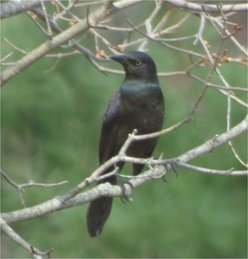
NEW ASSOCIATION FORMED
Association of Massachusetts Bird Clubs (AMBC)
First Meeting April 8, 2017
Ware River Nature Club is one of 17 (and counting) Massachusetts bird and nature clubs that has joined the new Association of Massachusetts Bird Clubs. John Nelson, a birder, writer, and active member of two eastern Massachusetts bird clubs, was the leader of this effort. His idea for forming a statewide group emerged from his research into the histories of some of our state’s oldest organized ornithological clubs. It was his thought that there would be numerous advantages to such a formation.
The first meeting of the Association was on 4/8/17. Wendy Howes attended as the WRNC representative. As the Association is brand new, it was clarified that there will be no officers or dues at this stage. Instead, representatives of interested member clubs will continue to meet at least twice yearly, share ideas, and develop mission and goals on a rather informal basis.
Since one of the immediate interests of the Association is to share ideas amongst the member groups, there was much discussion about the nuts-and-bolts of such an effort—how much and what kinds of information should be shared? Address national as well as state-wide bird issues? Best communication tools?
A few rules and guidelines at this early stage of organization were agreed upon.
- With regard to advocacy, no single member can act on behalf of the Association without three-quarters of the members vote of support
- Any Club can opt out of the Association whenever wanted, for any reason
- At this stage, communications will continue to be disseminated through John Nelson.
- To begin with discussion about mission, all Association members will share some of their current statements about mission, goals, and activities. Education seems to be the common theme.
The meeting was a lively sharing of expertise and enthusiasm, with a featured talk by state ornithologist Drew Vitz emphasizing some avenues for Clubs to become more involved with Mass Wildlife bird conservation efforts. To view Drew’s Powerpoint presentation, click HERE.
Two representatives of Bird Observer magazine presented information about this fine publication and its modern features, and solicited articles and volunteer involvement from Association members. Volunteer editor Marsha Salett suggested that BO, with its comprehensive and updated web-site, is willing and able to facilitate the communication and cross-collaboration goals of the Association. She would be happy to feature news of Clubs in upcoming issues. BO president and webmaster suggested various options for using the BO site as a central “umbrella” service for discussion, calendar of events, networking, etc.
The next meeting of the Association will be in the fall.
Please contact warerivernatureclub@yahoo.com if you’re interested in helping us submit written articles to Bird Observer or would like to represent the Club at future meetings of the Association of Massachusetts Bird Clubs.
`````````````````````````````````````````````````````````````````````````````````````````````````````````````````````````````````````````````````````````````
NEWS FROM MASS. DIVISION OF FISHERIES AND WILDLIFE BOARD
RE: TIMBER RATTLESNAKES
Dave Small of Athol, president of Athol Bird & Nature Club and a member of the Rattlesnake Working Group, shared this memo which was sent to group members in late April:
"The Fisheries and Wildlife Board would like to commend the members of the Rattlesnake Working Group for making valuable recommendations and comments on the need for conservation of the endangered population of rattlesnakes in Massachusetts. We are concerned that continued narrow focus on the Mount Zion proposal puts the remaining Eastern Timber rattlesnake habitats at risk and we accept the Working Group’s recommendation that the Division of Fisheries and Wildlife (MassWildlife) develop a statewide approach to the conservation of this species. We have directed staff to produce such a plan based on the outline that has been provided to the Working Group and to suspend the Mount Zion proposal.
The Working Group’s suggestion that public comments be solicited by mail and the Internet has produced over 300 comments. MassWildlife staff is engaged in putting all questions and comments into categories and is now developing answers that will be shared with the Working Group and the public in the near future.
One result of the public comment process is already clear. The penalties for violations of the Massachusetts Endangered Species Act are so low that individuals who are poaching rattlesnakes for commercial and private purposes or who deliberately seek to kill them or destroy their habitat are not deterred in their activities. The Board sees a clear opportunity for a legislative remedy to this matter. It is with our thanks to the Working Group members for their generous donation of time, travel, and advice that we discharge them from any further obligations to the Board."
RE: TIMBER RATTLESNAKES
Dave Small of Athol, president of Athol Bird & Nature Club and a member of the Rattlesnake Working Group, shared this memo which was sent to group members in late April:
"The Fisheries and Wildlife Board would like to commend the members of the Rattlesnake Working Group for making valuable recommendations and comments on the need for conservation of the endangered population of rattlesnakes in Massachusetts. We are concerned that continued narrow focus on the Mount Zion proposal puts the remaining Eastern Timber rattlesnake habitats at risk and we accept the Working Group’s recommendation that the Division of Fisheries and Wildlife (MassWildlife) develop a statewide approach to the conservation of this species. We have directed staff to produce such a plan based on the outline that has been provided to the Working Group and to suspend the Mount Zion proposal.
The Working Group’s suggestion that public comments be solicited by mail and the Internet has produced over 300 comments. MassWildlife staff is engaged in putting all questions and comments into categories and is now developing answers that will be shared with the Working Group and the public in the near future.
One result of the public comment process is already clear. The penalties for violations of the Massachusetts Endangered Species Act are so low that individuals who are poaching rattlesnakes for commercial and private purposes or who deliberately seek to kill them or destroy their habitat are not deterred in their activities. The Board sees a clear opportunity for a legislative remedy to this matter. It is with our thanks to the Working Group members for their generous donation of time, travel, and advice that we discharge them from any further obligations to the Board."
|
MASS AUDUBON BUTTERWORTH PROPERTY
Mass Audubon has an extraordinary opportunity to protect 84 acres of woods and wetlands in Petersham, known as the Butterworth property. The land is adjacent to the beautiful 1,700-acre Rutland Brook Wildlife Sanctuary which has been the setting of several Club hikes. The Butterworth property boasts an abundance of wildlife, including Red-shouldered Hawk, Blue-headed Vireo, and Yellow-bellied Sapsucker, and a includes a 20-acre beaver pond. Its protection would create a significant link between over 4,000 acres of protected open space and protect the water quality of the Quabbin Reservoir. Mass Audubon has secured an option to purchase the land for conservation, and must raise $270,000 by March 2017 to make this purchase. To read more and help with this important project, go to http://www.massaudubon.org/get-involved/conserve-land/urgent-land-projects/butterworth-property-petersham . |
^^^^^^^^^^^^^^^^^^^^^^^^^^^^^^^^^^^^^^^^^^^^^^^^^^^^^^^^^^^^^^^^^^^^^^^^^^^^^^^^^^^^^^^^^^^^^^^^^^^^^^^^^^^^^^^^^^^^^^^^^^^^^^^^^^^^^^^^
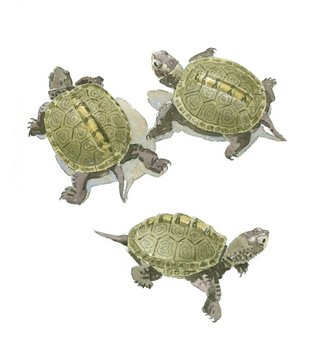 Diamondback Terrapin hatchlings by Barry Van Dusen
Diamondback Terrapin hatchlings by Barry Van Dusen
THIRD ANNUAL MEETING & SILENT AUCTION
A BIG SUCCESS!
With an enthusiastic and friendly group of attendees, two excellent presentations, and silent auction tables filled with assorted donated items, it's no wonder we were running a bit behind schedule at our annual meeting! But no one was complaining. The Hartman's Herb Farm space was filled with lively conversation and the camaraderie of people who value the beauty and complexity of nature.
The Club was able to raise some much-needed funds which will be used to enhance our educational offerings both outdoors and in meeting places throughout central Massachusetts.
A huge THANK YOU goes out to Lynn, Carissa, Cameron, and Chloe of Hartman's Herb Farm, who provided a delicious meal in a beautiful, cozy setting.
Many thanks, also to our two wonderful guest speakers, Barry Van Dusen, and Bill Benner, who packed so much information and beautiful images into their respective programs. See more about the talks at EVENTS.
We are grateful to the donors below for the many unique items donated to the auction. Having an array of items keeps things interesting and and bid-worthy!
Finally, we thank all of the participants who came out to enjoy the day and contribute to our success!
A BIG SUCCESS!
With an enthusiastic and friendly group of attendees, two excellent presentations, and silent auction tables filled with assorted donated items, it's no wonder we were running a bit behind schedule at our annual meeting! But no one was complaining. The Hartman's Herb Farm space was filled with lively conversation and the camaraderie of people who value the beauty and complexity of nature.
The Club was able to raise some much-needed funds which will be used to enhance our educational offerings both outdoors and in meeting places throughout central Massachusetts.
A huge THANK YOU goes out to Lynn, Carissa, Cameron, and Chloe of Hartman's Herb Farm, who provided a delicious meal in a beautiful, cozy setting.
Many thanks, also to our two wonderful guest speakers, Barry Van Dusen, and Bill Benner, who packed so much information and beautiful images into their respective programs. See more about the talks at EVENTS.
We are grateful to the donors below for the many unique items donated to the auction. Having an array of items keeps things interesting and and bid-worthy!
Finally, we thank all of the participants who came out to enjoy the day and contribute to our success!
 Black Swallowtail by Bill Benner
Black Swallowtail by Bill Benner
AUCTION DONORS
Elise and Karl Barry
The Curiosity Book Shop
Hardwick Farmers Coop
Sylvia Howes
Rod and Linda Leehy
Pam Prodan
Alan Rawle
Estate of Jean Rawle
Sarkisian Landscaping Services
Barry and Lisa Van Dusen
Elise and Karl Barry
The Curiosity Book Shop
Hardwick Farmers Coop
Sylvia Howes
Rod and Linda Leehy
Pam Prodan
Alan Rawle
Estate of Jean Rawle
Sarkisian Landscaping Services
Barry and Lisa Van Dusen
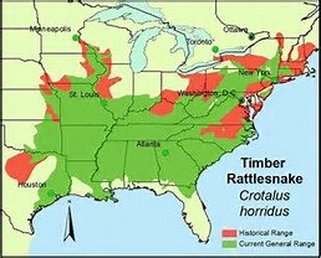
Massachusetts Rattlesnake Conservation Plan Survey
If you would like to contribute advice or comments about MassWildlife's plans for the conservation of Timber Rattlesnakes, you have the opportunity to respond to these survey questions:
1) Do you have questions about any aspect of the Rattlesnake Conservation Plan that you believe have not been previously covered or answered? Please describe.
2) During the public meetings on the Rattlesnake Conservation Plan, some questions were raised about the accuracy of the science behind the Conservation Plan. If you have reason to believe that there is scientific evidence that has been overlooked, or a matter of science that you question, please describe this below: For each scientific comment, please supply a source or citation for any overlooked or alternative scientific information.
Click here to answer the on-line survey or access a printable survey form.
Rattlesnake Review Working Group
The second public meeting of the Rattlesnake Review Working Group took place on February 28, 2017, in Belchertown. The third meeting is Wednesday, March 22nd
6:30 P.M., at the Knights of Columbus Hall, 126 West Main Street, Ware. The public is invited to observe the proceedings, and there may be an opportunity for brief public comment.
The formation of the Rattlesnake Review Group is a response to a promise made to legislators by the offices of Energy &Environmental Affairs and Dept. of Fish & Game at a legislative oversight hearing in 2016, to conduct a review of the Division of Fisheries and Wildlife’s (MassWildlife's) Rattlesnake Conservation Plan. The Rattlesnake Review Group’s purpose is to: 1) ask citizens to identify issues and concerns that may not have been adequately covered in previous public meetings, and 2) identify scientific information on rattlesnakes that may not have been considered in the current Plan. After a thorough examination of all the information, the Rattlesnake Review Group will make a recommendation about the Rattlesnake Conservation Plan to the Fisheries and Wildlife Board.
The membership of the Review Group, operating under the purview of the state Fisheries and Wildlife Board, includes Quabbin area residents with ties to local municipalities and conservation organizations, local state legislators, the DFG and DCR Commissioners, and the Director of MassWildlife. A Science Advisory Group composed of scientists from UMass Amherst, Berkshire Community College, Roger Williams Zoo in Rhode Island, and the Division of Fisheries and Wildlife will assist the Review Group as needed.
~~~~~~~~~~~~~~~~~~~~~~~~~~~~~~~~~~~~~~~~~~~~~~~~~~~~~~~~~~~~~~~~~~~~~~~~~~~~~~~~~~~~~~~~~~~~~~~~~~~~~~~~~~
If you would like to contribute advice or comments about MassWildlife's plans for the conservation of Timber Rattlesnakes, you have the opportunity to respond to these survey questions:
1) Do you have questions about any aspect of the Rattlesnake Conservation Plan that you believe have not been previously covered or answered? Please describe.
2) During the public meetings on the Rattlesnake Conservation Plan, some questions were raised about the accuracy of the science behind the Conservation Plan. If you have reason to believe that there is scientific evidence that has been overlooked, or a matter of science that you question, please describe this below: For each scientific comment, please supply a source or citation for any overlooked or alternative scientific information.
Click here to answer the on-line survey or access a printable survey form.
Rattlesnake Review Working Group
The second public meeting of the Rattlesnake Review Working Group took place on February 28, 2017, in Belchertown. The third meeting is Wednesday, March 22nd
6:30 P.M., at the Knights of Columbus Hall, 126 West Main Street, Ware. The public is invited to observe the proceedings, and there may be an opportunity for brief public comment.
The formation of the Rattlesnake Review Group is a response to a promise made to legislators by the offices of Energy &Environmental Affairs and Dept. of Fish & Game at a legislative oversight hearing in 2016, to conduct a review of the Division of Fisheries and Wildlife’s (MassWildlife's) Rattlesnake Conservation Plan. The Rattlesnake Review Group’s purpose is to: 1) ask citizens to identify issues and concerns that may not have been adequately covered in previous public meetings, and 2) identify scientific information on rattlesnakes that may not have been considered in the current Plan. After a thorough examination of all the information, the Rattlesnake Review Group will make a recommendation about the Rattlesnake Conservation Plan to the Fisheries and Wildlife Board.
The membership of the Review Group, operating under the purview of the state Fisheries and Wildlife Board, includes Quabbin area residents with ties to local municipalities and conservation organizations, local state legislators, the DFG and DCR Commissioners, and the Director of MassWildlife. A Science Advisory Group composed of scientists from UMass Amherst, Berkshire Community College, Roger Williams Zoo in Rhode Island, and the Division of Fisheries and Wildlife will assist the Review Group as needed.
~~~~~~~~~~~~~~~~~~~~~~~~~~~~~~~~~~~~~~~~~~~~~~~~~~~~~~~~~~~~~~~~~~~~~~~~~~~~~~~~~~~~~~~~~~~~~~~~~~~~~~~~~~
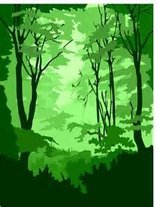
TIME TO START OR RENEW YOUR MEMBERSHIP
Our Club membership year now runs February 1st through January 31st. We are gradually bringing all memberships in line with that schedule by extending existing memberships an extra month or two. If you just joined in the past few months, you’ll have some bonus months until February 2018. Other members are due for renewal now. Click here for a membership form. If you’re a renewing member and are uncertain of your status, just drop us a line at warerivernatureclub@yahoo.com .
****************************************************************************************************************************************
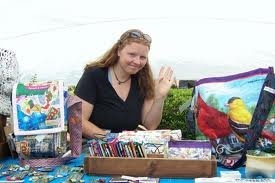
A “THANK YOU” TO THE OAKHAM CULTURAL COUNCIL We’re very grateful to the Oakham Cultural Council for the award of a grant so we can offer a workshop and educational session with Eco-Artist Lou Leelyn, owner of Lou's Upcycles, in Oakham on March 4th. Participants will learn about upcycling plastic bags—creating new items-- through the process of fusing. See UPCOMING EVENTS for details. |
|
Become a Plant Conservation Volunteer At New England Wild Flower Society |
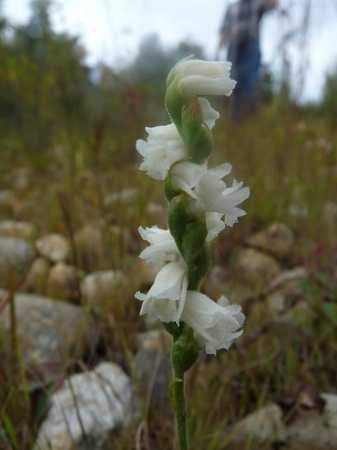
Are you enthusiastic about plant identification, motivated to explore interesting natural habitats, and a little adventurous? Then New England Wild Flower Society needs you! Its Plant Conservation Volunteer Program puts the botanic skills of citizen scientists like you to work collecting information on rare plants and their habitats across all six New England states, assisting with invasive and habitat management projects, surveys, and even seed collecting. Free annual training and field trips. Learn more about the flora of New England, meet others with similar interests, and help preserve your state's natural heritage. Training sessions will be held on a weekend in March/April for each of the New England States. The application deadline is February 1, 2017. To learn more and apply online click HERE. |
LOCAL CHRISTMAS BIRD COUNT RESULTS
|
ATHOL CHRISTMAS BIRD COUNT December 17, 2016
Compiler: Dave Small TOTAL SPECIES 53 TOTAL INDIVIDUALS 7257 Canada Goose 8 Am. Black Duck 8 Mallard 107 Common Merganser 1 Ringed-Neck Pheasant cw Ruffed Grouse 1 Wild Turkey 168 Bald Eagle cw Sharp-Shinned Hawk 2 Coopers Hawk 7 Northern Goshawk 1 Red-shouldered Hawk 1 Red-Tailed Hawk 8 Merlin 1 Ring-Billed Gull 2 Rock (Dove) Pigeon 464 Mourning Dove 392 Great Horned Owl 2 Barred Owl 6 Saw-Whet Owl 2 Belted Kingfisher 4 Red-bellied Woodpecker 36 Downy Woodpecker 116 Hairy Woodpecker 41 Northern Flicker 2 Pileated Woodpecker 4 Northern Shrike cw Blue Jay 530 American Crow 131 Common Raven 33 Black-capped Chickadee 1,234 Tufted Titmouse 354 Red-Breasted Nuthatch 22 White-Breasted Nuthatch 150 Brown Creeper 2 Carolina Wren 10 Winter Wren 1 Hermit Thrush 2 American Robin 310 Northern Mockingbird 2 Starling 438 Cedar Waxwing 239 American Tree Sparrow 105 Fox Sparrow 2 Song Sparrow 14 Swamp Sparrow 1 White-Throated Sparrow 32 Dark-eyed Junco 980 Northern Cardinal 204 Purple Finch 3 House Finch 130 Common Redpoll 1 Pine Siskin 6 American Goldfinch 516 Evening Grosbeak cw House Sparrow 394 cw= seen count week (three days before and after count date) |
Canada Goose (1,014)
CACKLING GOOSE (cw - Seen in a flock of Canada Geese on Thursday at Coachlace Pond in Clinton.) Mute Swan (22) American Black Duck (48) Mallard (560) Ring-necked Duck (43) Greater Scaup (46) Long-tailed Duck (cw) Bufflehead (5) Common Goldeneye (94) Barrow's Goldeneye (1 - female) Hooded Merganser (155) Common Merganser (37) Ruddy Duck (1) Ruffed Grouse (1) Wild Turkey (38) Common Loon (3) Pied-billed Grebe (1) Red-necked Grebe (cw) Great Blue Heron (5) Bald Eagle (5) Sharp-shinned Hawk (2) Cooper's Hawk (7) Red-tailed Hawk (36) Red-shouldered X Red-tailed Hawk hybrid (1 - has been around for several years) SANDHILL CRANE (4 - NEW SPECIES - Seen together in a corn field on Muschopaugue Road in Holden/Rutland. Three distant photos were taken through a scope. Several people looked for them again on 12/19, but to no avail.) Ring-billed Gull (1,293) Herring Gull (21) Iceland Gull (1) Great Black-backed Gull (3) Rock Pigeon (312) Mourning Dove (195) Eastern Screech-Owl (7) Great Horned Owl (5) Barred Owl (1) Belted Kingfisher (7) Red-bellied Woodpecker (26) Downy Woodpecker (64) Hairy Woodpecker (19) Northern Flicker (9) Pileated Woodpecker (1) Merlin (count week) Peregrine Falcon (1 - downtown Worcester) Blue Jay (480) American Crow (2,780) Fish Crow (1) Common Raven (4) Horned Lark (38) Black-capped Chickadee (449) Tufted Titmouse (294) Red-breasted Nuthatch (6) White-breasted Nuthatch (110) Brown Creeper (1) Carolina Wren (10) Golden-crowned Kinglet (18) Eastern Bluebird (39) Hermit Thrush (1) American Robin (347) Northern Mockingbird (14) European Starling (1.867) Cedar Waxwing (21) Eastern Towhee (1) American Tree Sparrow (40) Field Sparrow (2) Savannah Sparrow (1) Fox Sparrow (1) Song Sparrow (54) Swamp Sparrow (3) White-throated Sparrow (45) Dark-eyed Junco (604) Snow Bunting (36) LAPLAND LONGSPUR (1 - NEW SPECIES - Seen and heard with group of Snow Buntings at Worcester Airport. There may have been 2.) Northern Cardinal (123) Red-winged Blackbird (5) House Finch (52) American Goldfinch (173) House Sparrow (1276) |
|
WESTMINSTER CHRISTMAS BIRD COUNT January 6, 2017 Compiler: Chuck Caron American Black Duck 19 Mallard 341 Hooded Merganser 6 Wild Turkey 104 Sharp-shinned Hawk 1 Cooper's Hawk 2 Bald Eagle 1 Red-tailed Hawk 16 Ring-billed Gull 68 Herring Gull 329 Great Black-backed Gull 33 Rock Pigeon (Feral Pigeon) 102 Mourning Dove 113 Barred Owl 1 Red-bellied Woodpecker 41 Downy Woodpecker 91 Hairy Woodpecker 25 Pileated Woodpecker 1 American Kestrel 1 Blue Jay 436 American Crow 456 Common Raven 7 Horned Lark 3 Black-capped Chickadee 890 Tufted Titmouse 335 Red-breasted Nuthatch 11 White-breasted Nuthatch 155 Brown Creeper 4 Carolina Wren 3 Ruby-crowned Kinglet 2 Eastern Bluebird 31 |
American Robin 457 Northern Mockingbird 5 European Starling 165 Cedar Waxwing 117 Snow Bunting 1 American Tree Sparrow 51 Dark-eyed Junco (Slate-colored) 633 White-throated Sparrow 5 Song Sparrow 8 Eastern Towhee 1 Northern Cardinal 77 House Finch 94 Purple Finch 4 American Goldfinch 231 House Sparrow 457 |
|
STURBRIDGE CHRISTMAS BIRD COUNT December 14, 2016
Compiler: Mark Lynch CANADA GOOSE (713) AMERICAN BLACK DUCK (85) MALLARD (921) RING-NECKED DUCK (3) GREATER SCAUP (1) BUFFLEHEAD (3) COMMON GOLDENEYE (3) HOODED MERGANSER (87) COMMON MERGANSER (26) BALD EAGLE (8) NORTHERN HARRIER (2) SHARP-SHINNED HAWK (8) COOPER'S HAWK (6) NORTHERN GOSHAWK (1) accipiter sp. (1) RED-SHOULDERED HAWK (5) RED-TAILED HAWK (67) ROUGH-LEGGEDHAWK (1) RING-NECKED PHEASANT (1) RUFFED GROUSE (2) WILD TURKEY (19) WILSON'S SNIPE (1) RING-BILLED GULL (434) HERRING GULL (12) ROCK PIGEON (444) MOURNING DOVE (414) E SCREECH OWL (8) GREAT HORNED OWL (9) BARRED OWL (7) N SAW-WHET OWL (14) BELTED KINGFISHER (6) RED-HEADED WOODPECKER (1 imm: about 100 yards from the feeder where one was seen years back.) RED-BELLIED WOODPECKER (80) DOWNY WOODPECKER (178) HAIRY WOODPECKER (55) NORTHERN FLICKER (18) PILEATED WOODPECKER (9) |
HORNED LARK (90) BLUE JAY (687) AMERICAN CROW (451) COMMON RAVEN (11) BLACK-CAPPED CHICKADEE (1,491) TUFTED TITMOUSE (626) RED-BREASTED NUTHATCH (5) WHITE-BREASTED NUTHATCH (317) BROWN CREEPER (21) CAROLINA WREN (28) WINTER WREN (1) GOLDEN-CROWNED KINGLET (46) EASTERN BLUEBIRD (149) HERMIT THRUSH (2) AMERICAN ROBIN (593) GRAY CATBIRD (1) NORTHERN MOCKINGBIRD (21) CEDAR WAXWING (18) NORTHERN SHRIKE (cw) EUROPEAN STARLING (1,097) NORTHERN CARDINAL (252) EASTERN TOWHEE (1) AMERICAN TREE SPARROW (190) FIELD SPARROW (4) FOX SPARROW (1) SONG SPARROW (86) SWAMP SPARROW (7) WHITE-THROATED SPARROW (53) DARK-EYED JUNCO (1,431) SNOW BUNTING (3) RED-WINGED BLACKBIRD (15) COMMON GRACKLE (2) RUSTY BLACKBIRD (2) BROWN-HEADED COWBIRD (4) PURPLE FINCH (16) HOUSE FINCH (131) PINE SISKIN (3) AMERICAN GOLDFINCH (488) EVENING GROSBEAK (cw) HOUSE SPARROW (1,311) |
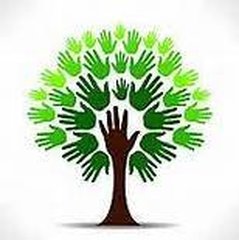
WANT TO GET MORE INVOLVED WITH WRNC?
HELPING HANDS ALWAYS WELCOME!
If you’re a Club member and would like to help with the various tasks of keeping a small organization going, step right up! We can use help with some jobs that come up intermittently—assisting with the annual meeting and silent auction in February, for example-- as well as regular volunteers to take on responsibilities such as publicizing Club events, becoming part of the advisory group, maintaining membership records, and more.
For membership information, click here.
Drop us a line at warerivernatureclub@yahoo.com
^^^^^^^^^^^^^^^^^^^^^^^^^^^^^^^^^^^^^^^^^^^^^^^^^^^^^^^^^^^^^^^^^^^^^^^^^^^^^^^^^^^^^^^^^^^^^^^^^^^^^^^^^^^^^^^^^^^^^^^
HELPING HANDS ALWAYS WELCOME!
If you’re a Club member and would like to help with the various tasks of keeping a small organization going, step right up! We can use help with some jobs that come up intermittently—assisting with the annual meeting and silent auction in February, for example-- as well as regular volunteers to take on responsibilities such as publicizing Club events, becoming part of the advisory group, maintaining membership records, and more.
For membership information, click here.
Drop us a line at warerivernatureclub@yahoo.com
^^^^^^^^^^^^^^^^^^^^^^^^^^^^^^^^^^^^^^^^^^^^^^^^^^^^^^^^^^^^^^^^^^^^^^^^^^^^^^^^^^^^^^^^^^^^^^^^^^^^^^^^^^^^^^^^^^^^^^^

GRATITUDE FOR MASSACHUSETTS CULTURAL COUNCIL
When the Club Advisory Group met at the end of summer, there was no shortage of ideas for educational programs that we’d like to offer to communities. However, small groups such as ours do experience financial shortages. We are grateful for the Massachusetts Cultural Council, a state agency “that promotes excellence, access, education, and diversity in the arts, humanities, and interpretive sciences to improve the quality of life for all Massachusetts residents and contribute to the economic vitality of our communities.” Grant monies are made available on the community level. This year we applied to three of our catchment area communities for funds that will enable us to offer three very different science/nature experiences in 2017: an educational and artistic plastic upcycling workshop; a winter wildlife tracking program and field trip; and a program featuring live owls and a lecture on owl ecology. Without the MCC grant program, we would be unable to offer these special events. Grant applicants receive notification by January. Fingers crossed! Stay tuned!
When the Club Advisory Group met at the end of summer, there was no shortage of ideas for educational programs that we’d like to offer to communities. However, small groups such as ours do experience financial shortages. We are grateful for the Massachusetts Cultural Council, a state agency “that promotes excellence, access, education, and diversity in the arts, humanities, and interpretive sciences to improve the quality of life for all Massachusetts residents and contribute to the economic vitality of our communities.” Grant monies are made available on the community level. This year we applied to three of our catchment area communities for funds that will enable us to offer three very different science/nature experiences in 2017: an educational and artistic plastic upcycling workshop; a winter wildlife tracking program and field trip; and a program featuring live owls and a lecture on owl ecology. Without the MCC grant program, we would be unable to offer these special events. Grant applicants receive notification by January. Fingers crossed! Stay tuned!
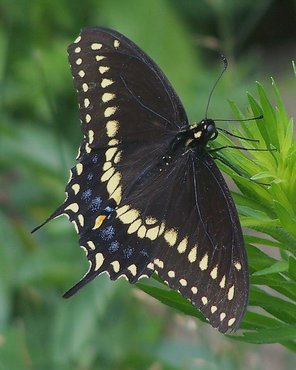 BLACK SWALLOWTAIL male
Photo by Frank Model
BLACK SWALLOWTAIL male
Photo by Frank Model
MASSACHUSETTS STATE BUTTERFLY CAMPAIGN:
AND THE WINNER IS. . .
BLACK SWALLOWTAIL!
At the fall meeting of the Massachusetts Butterfly Club, Nancy Callahan, who spearheaded the campaign to designate a state butterfly, announced the results of the recent vote. The Black Swallowtail edged out
the two other contenders.
Black Swallowtail .................... 531 votes
Mourning Cloak ..................... 470 votes
Great Spangled Fritillary ......... 152 votes
Upcoming efforts will focus on pursuing legislative action
through appropriate channels.
For the latest news and status, go to the
Massachusetts State Butterfly Facebook page.
AND THE WINNER IS. . .
BLACK SWALLOWTAIL!
At the fall meeting of the Massachusetts Butterfly Club, Nancy Callahan, who spearheaded the campaign to designate a state butterfly, announced the results of the recent vote. The Black Swallowtail edged out
the two other contenders.
Black Swallowtail .................... 531 votes
Mourning Cloak ..................... 470 votes
Great Spangled Fritillary ......... 152 votes
Upcoming efforts will focus on pursuing legislative action
through appropriate channels.
For the latest news and status, go to the
Massachusetts State Butterfly Facebook page.
Let's Pick a Massachusetts State Butterfly!
Massachusetts has an official state bean (baked navy), a state muffin (corn), and a state rock (Roxbury Puddingstone), but no state butterfly!
It’s time to change that.
Butterflies are beautiful and have much to say about the health of our environment. That’s why declining populations due to loss of habitat and other environmental threats are a cause for great concern.
To raise awareness and celebrate the world that is butterflies, The Massachusetts Butterfly Club has partnered with Girl Scout Troop #85103 of Norfolk to nominate three candidates for Massachusetts State Butterfly.
Please click on MAStateButterfly.com to see more information about this effort and the nominated butterflies.
The Survey Monkey to vote for State Butterfly of Massachusetts is now up and running: https://www.surveymonkey.com/r/massstatebutterfly
Voting is from September 15th - October 15th One vote per device.
Massachusetts has an official state bean (baked navy), a state muffin (corn), and a state rock (Roxbury Puddingstone), but no state butterfly!
It’s time to change that.
Butterflies are beautiful and have much to say about the health of our environment. That’s why declining populations due to loss of habitat and other environmental threats are a cause for great concern.
To raise awareness and celebrate the world that is butterflies, The Massachusetts Butterfly Club has partnered with Girl Scout Troop #85103 of Norfolk to nominate three candidates for Massachusetts State Butterfly.
Please click on MAStateButterfly.com to see more information about this effort and the nominated butterflies.
The Survey Monkey to vote for State Butterfly of Massachusetts is now up and running: https://www.surveymonkey.com/r/massstatebutterfly
Voting is from September 15th - October 15th One vote per device.
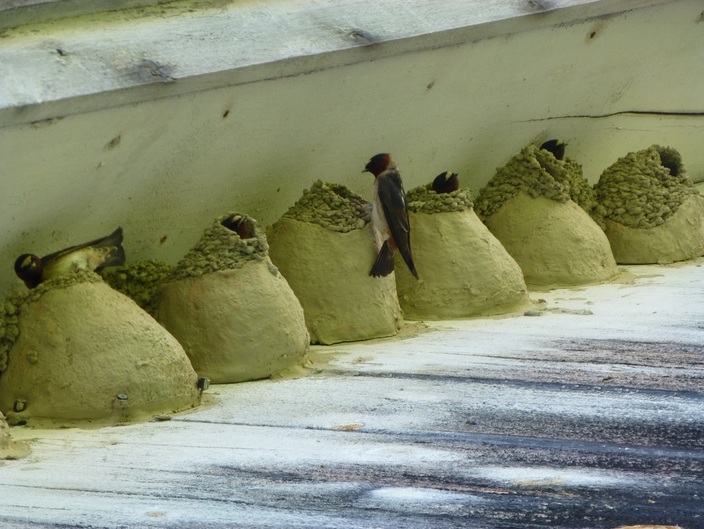
CLIFF SWALLOWS 2016
In May 2015 WRNC hosted a fascinating program by Mara Silver, who studies Barn and Cliff Swallows in Berkshire County. One of Mara's innovations for attracting Cliff Swallows to historic breeding sites involves attaching homemade pottery structures that look like old Cliff Swallow nests under the eaves of barns. Mara sent along this note and photo pertaining to this year's nesting season:
Cliff swallows did really well. They showed up early, got their young off, and were out of there by July 3! That is good news because the young had plenty of time to get strong and learn the skills they need to fly all the way down to South America. My barn swallow numbers are way down and that’s concerning...I am doing some research on that. . .
We look forward to hearing more about Mara's efforts in the future!
Here in central Massachusetts, East Quabbin Land Trust volunteers were pleased to discover a small colony of Cliff Swallows in 2015 while they were helping secure an Agricultural Preservation Restriction (APR) on a property in New Braintree. The swallows returned for the 2016 nesting season.
The APR program is a voluntary program which offers to pay farmland owners the difference between the "fair market value" and the "agricultural value" of their farmland in exchange for a permanent deed restriction which precludes any use of the property that will have a negative impact on its agricultural viability. EQLT facilitated that process by pre-acquiring the land, finding a conservation buyer and getting the APR through the state process.
It was determined that 4 active pairs of swallows were using the property’s barn for nest sites. The farm owner reports that perhaps 5-6 pairs of swallows have been there for years; it is unknown if this location may have hosted a larger colony historically. The owner is enthusiastic about protecting the birds and their nest sites. We hope to hear of an increase in the number of these declining birds in future seasons.
In May 2015 WRNC hosted a fascinating program by Mara Silver, who studies Barn and Cliff Swallows in Berkshire County. One of Mara's innovations for attracting Cliff Swallows to historic breeding sites involves attaching homemade pottery structures that look like old Cliff Swallow nests under the eaves of barns. Mara sent along this note and photo pertaining to this year's nesting season:
Cliff swallows did really well. They showed up early, got their young off, and were out of there by July 3! That is good news because the young had plenty of time to get strong and learn the skills they need to fly all the way down to South America. My barn swallow numbers are way down and that’s concerning...I am doing some research on that. . .
We look forward to hearing more about Mara's efforts in the future!
Here in central Massachusetts, East Quabbin Land Trust volunteers were pleased to discover a small colony of Cliff Swallows in 2015 while they were helping secure an Agricultural Preservation Restriction (APR) on a property in New Braintree. The swallows returned for the 2016 nesting season.
The APR program is a voluntary program which offers to pay farmland owners the difference between the "fair market value" and the "agricultural value" of their farmland in exchange for a permanent deed restriction which precludes any use of the property that will have a negative impact on its agricultural viability. EQLT facilitated that process by pre-acquiring the land, finding a conservation buyer and getting the APR through the state process.
It was determined that 4 active pairs of swallows were using the property’s barn for nest sites. The farm owner reports that perhaps 5-6 pairs of swallows have been there for years; it is unknown if this location may have hosted a larger colony historically. The owner is enthusiastic about protecting the birds and their nest sites. We hope to hear of an increase in the number of these declining birds in future seasons.
